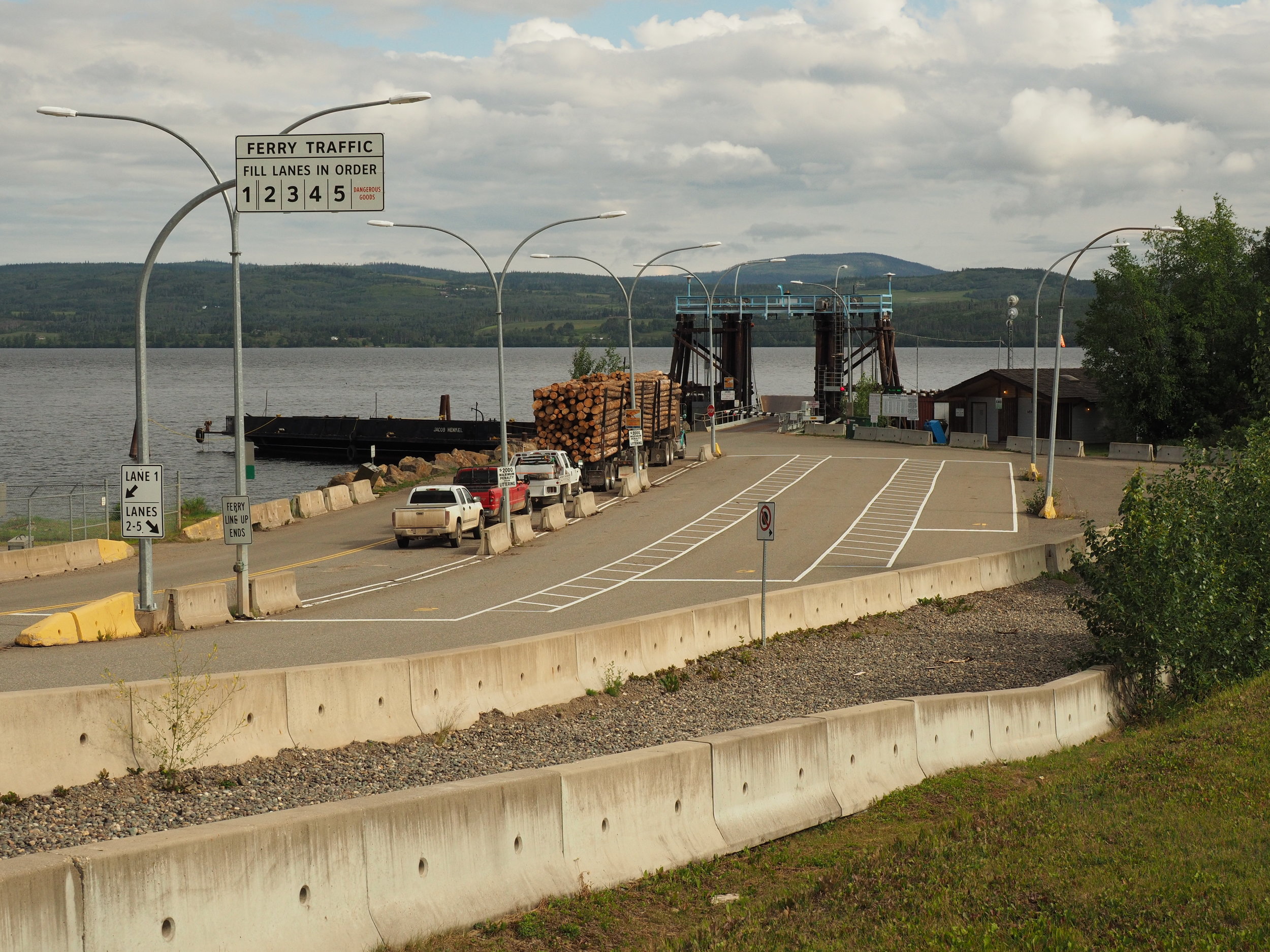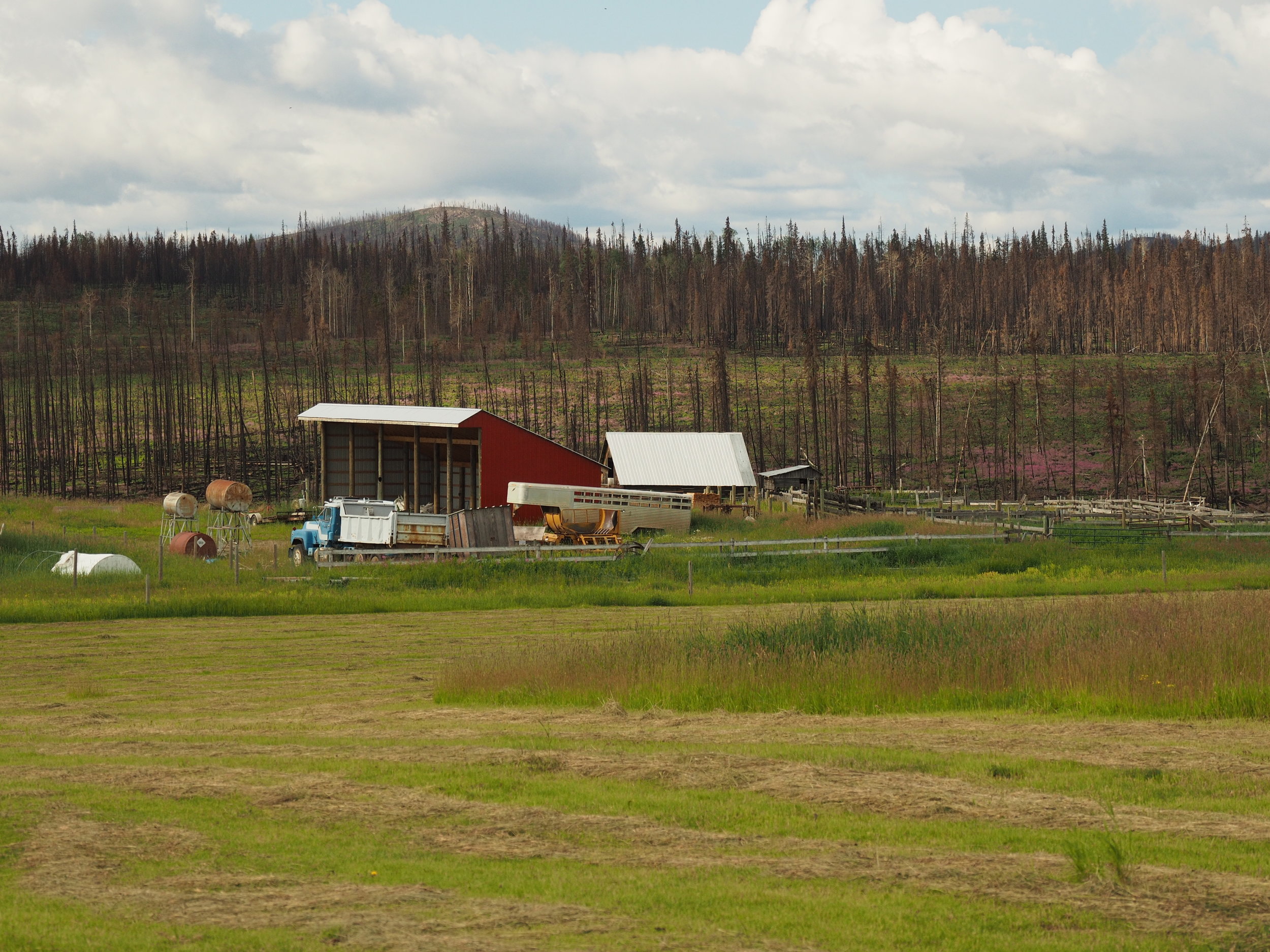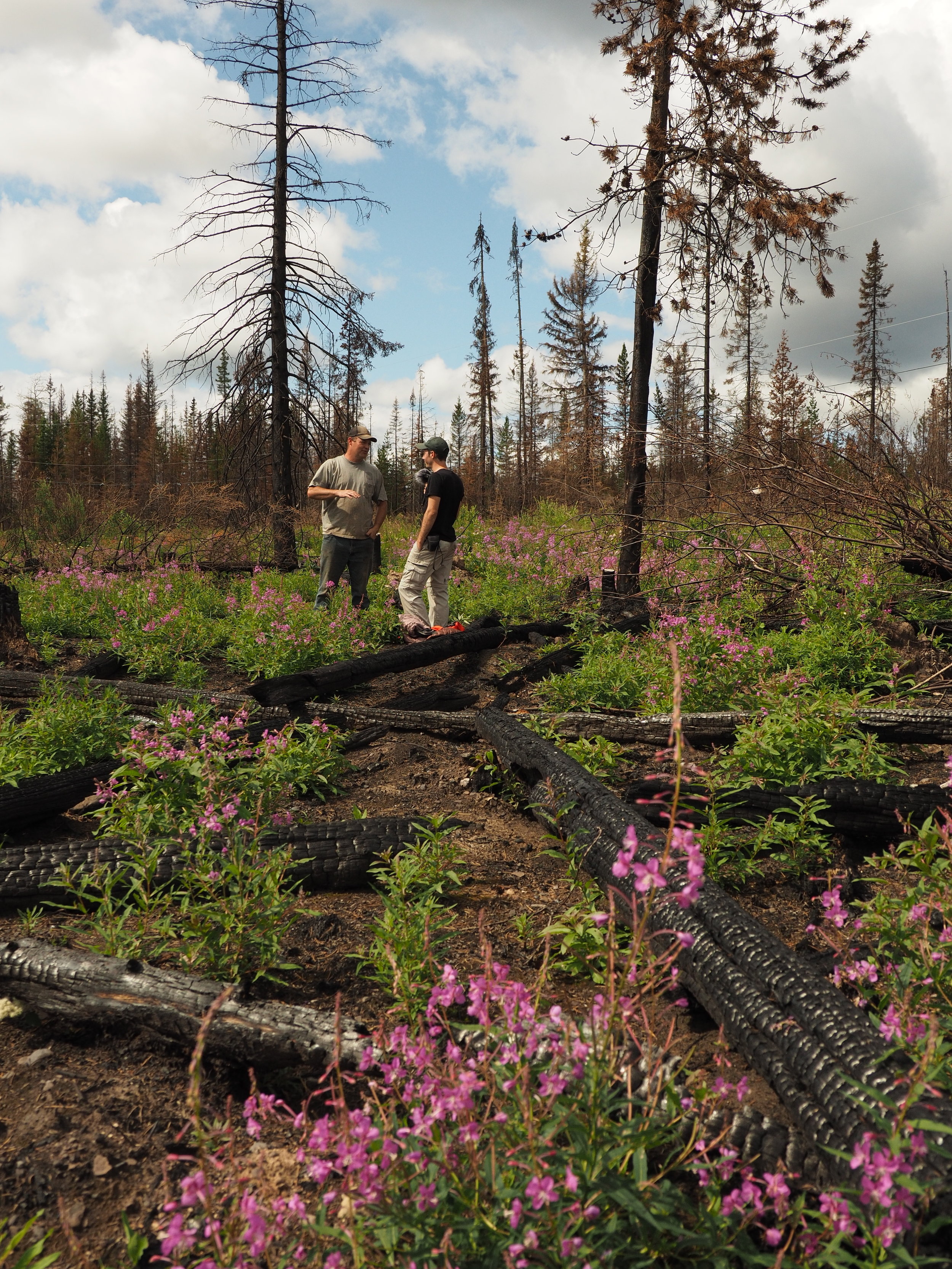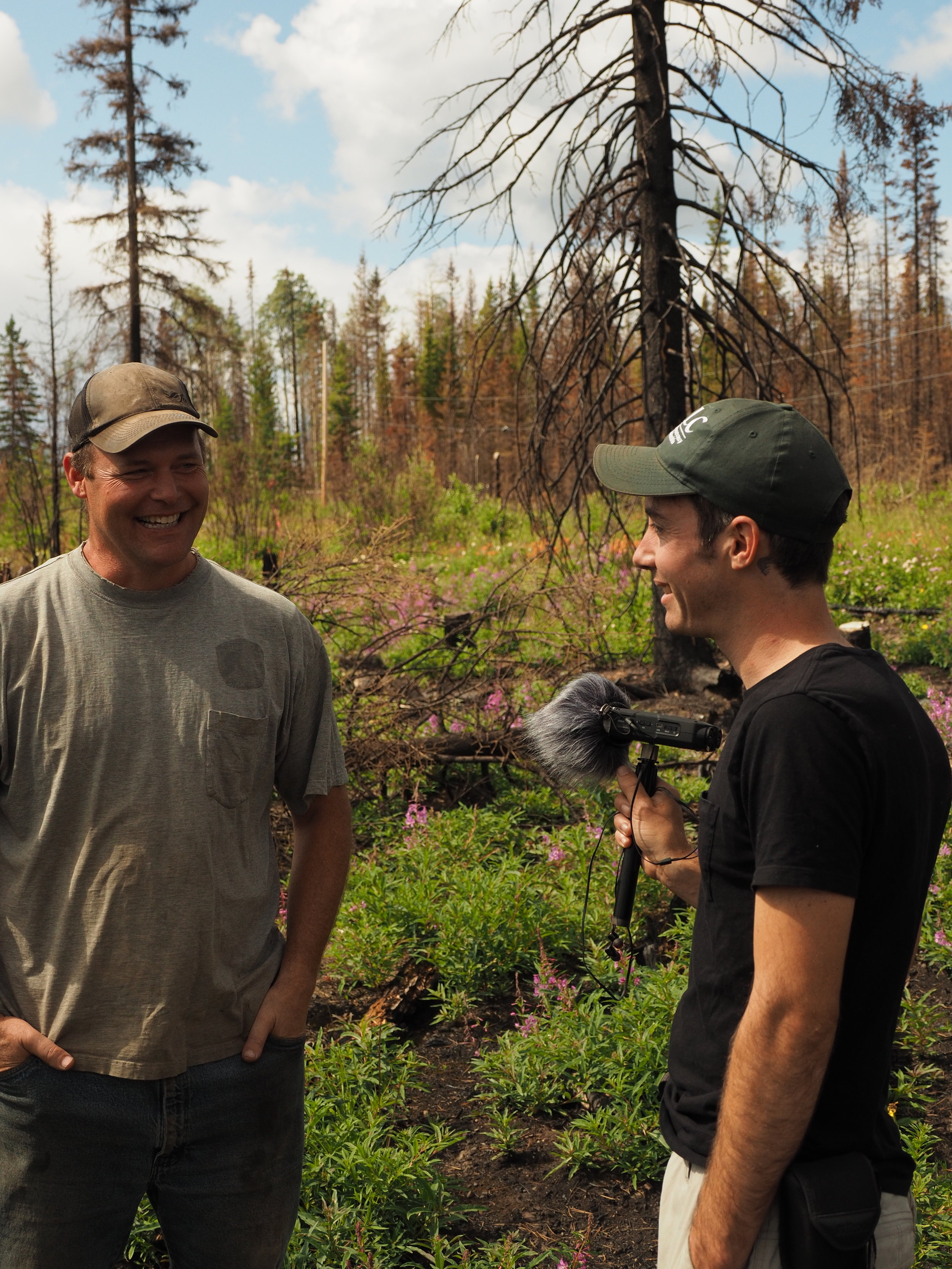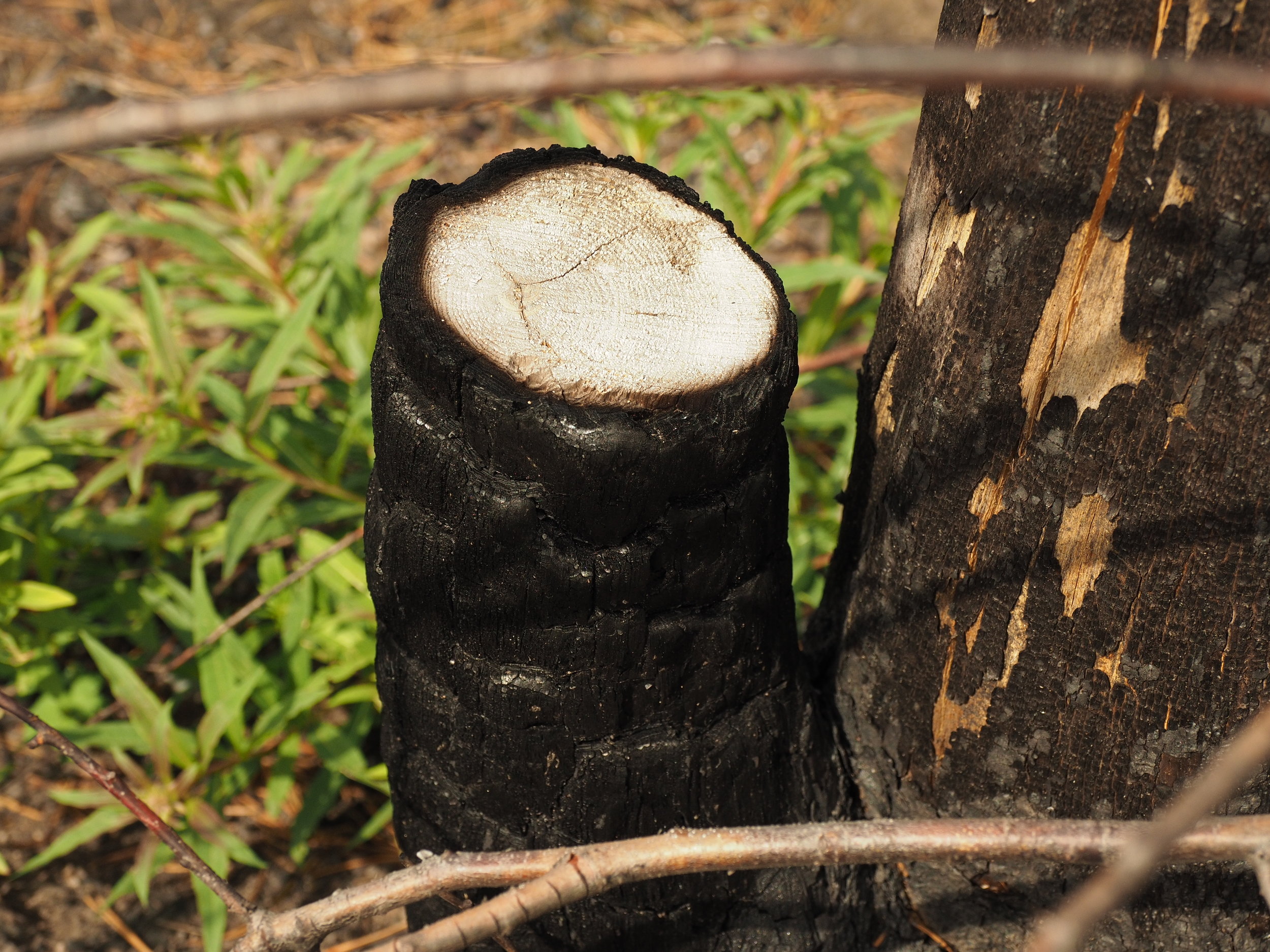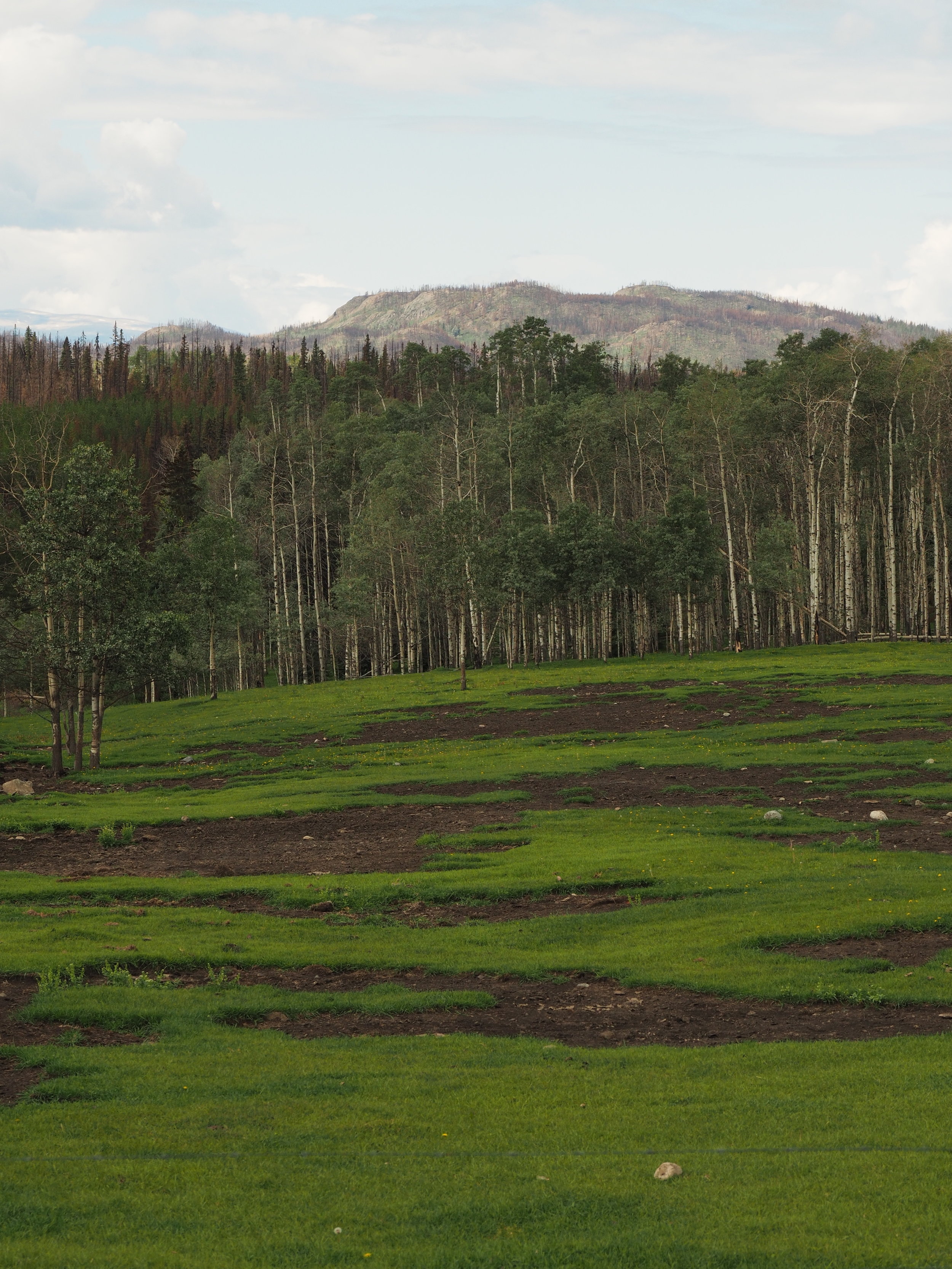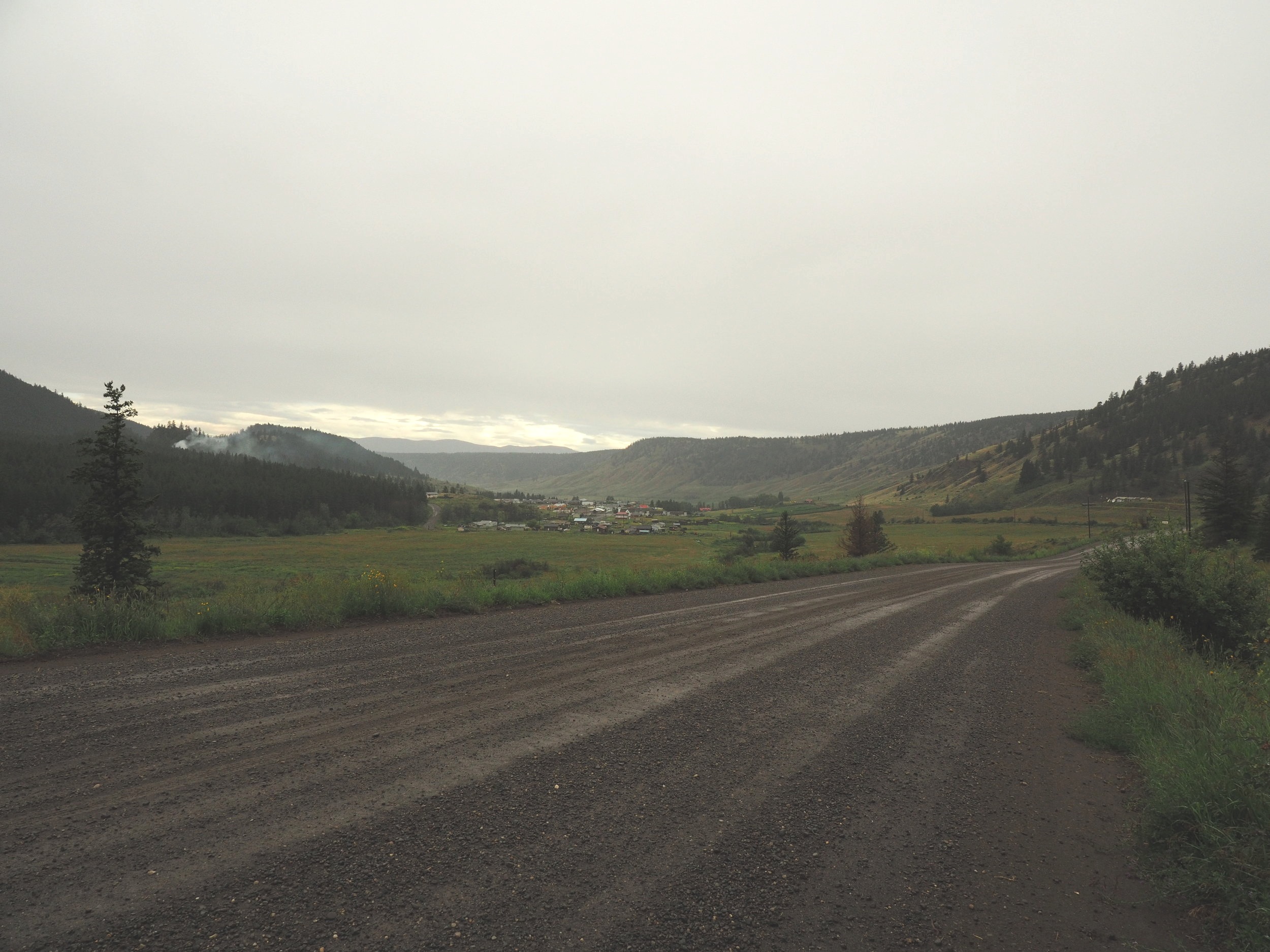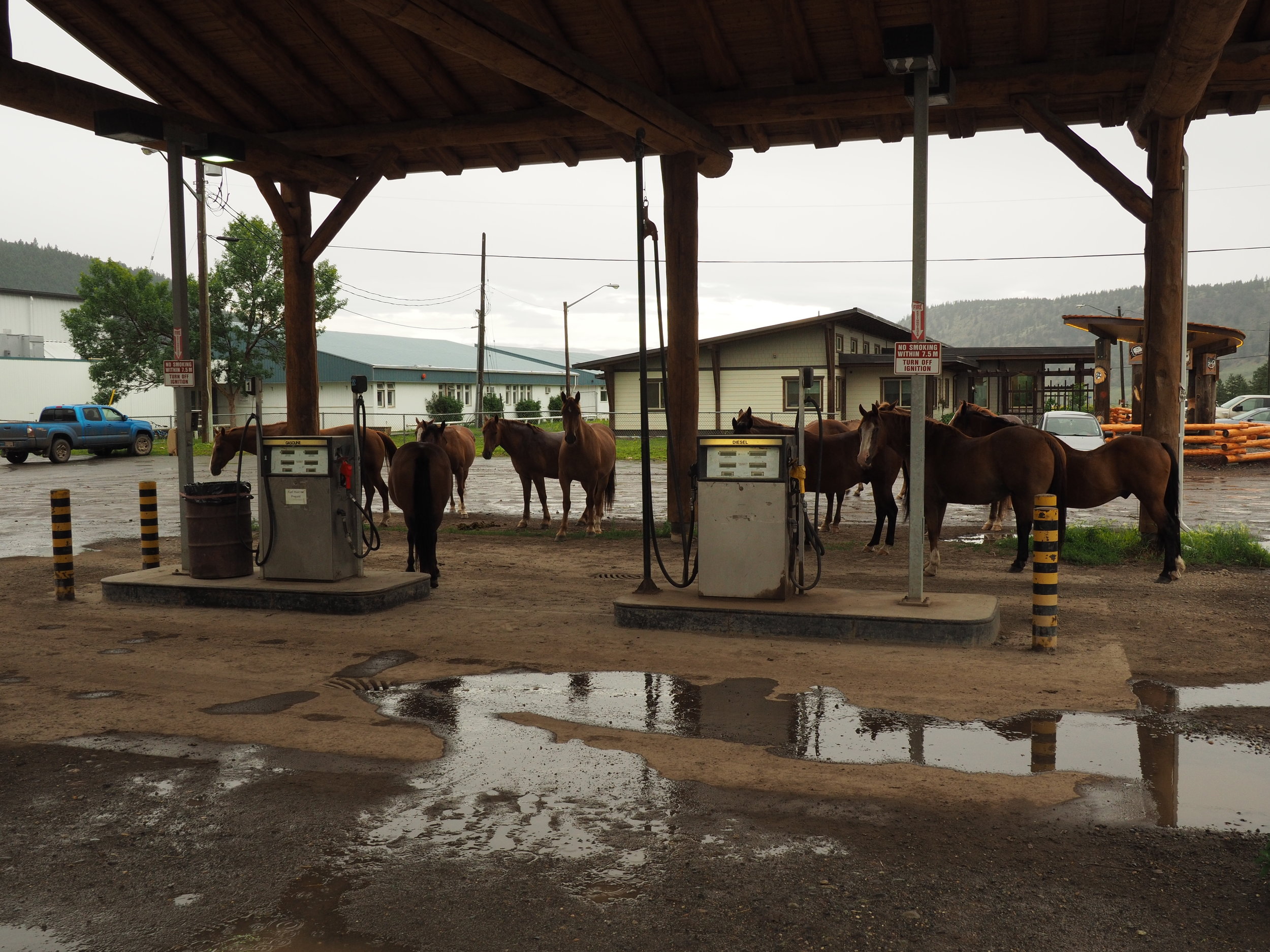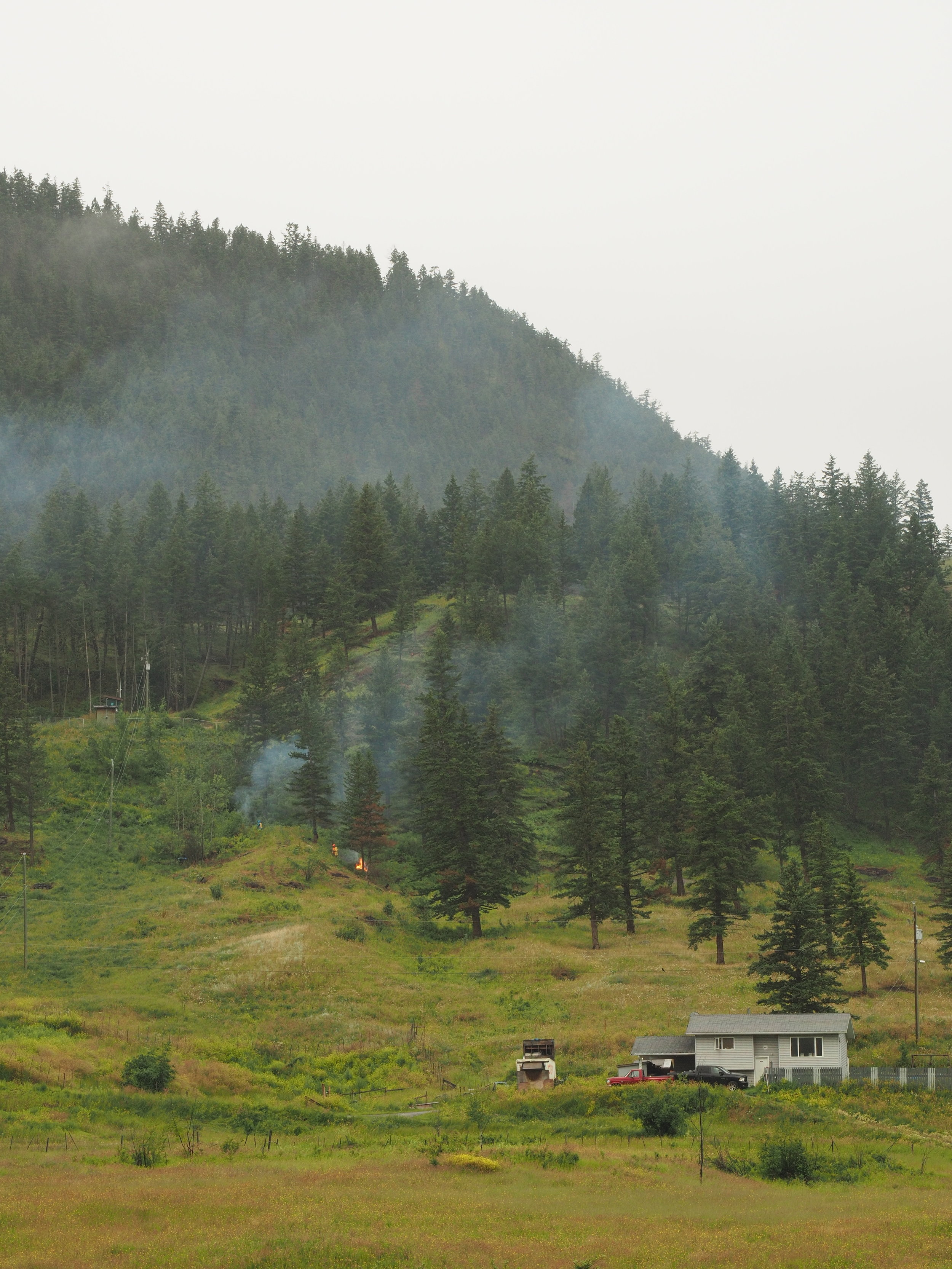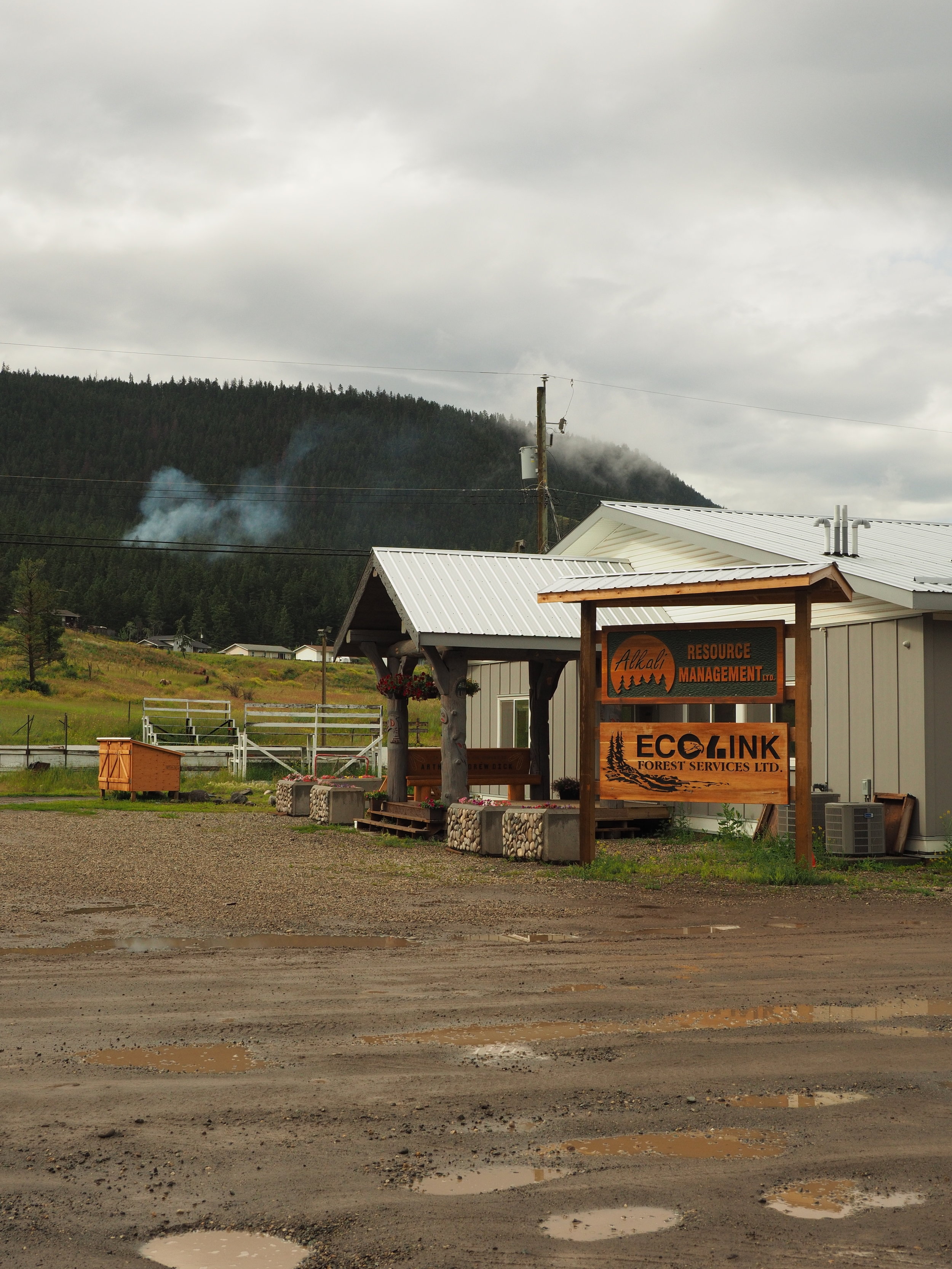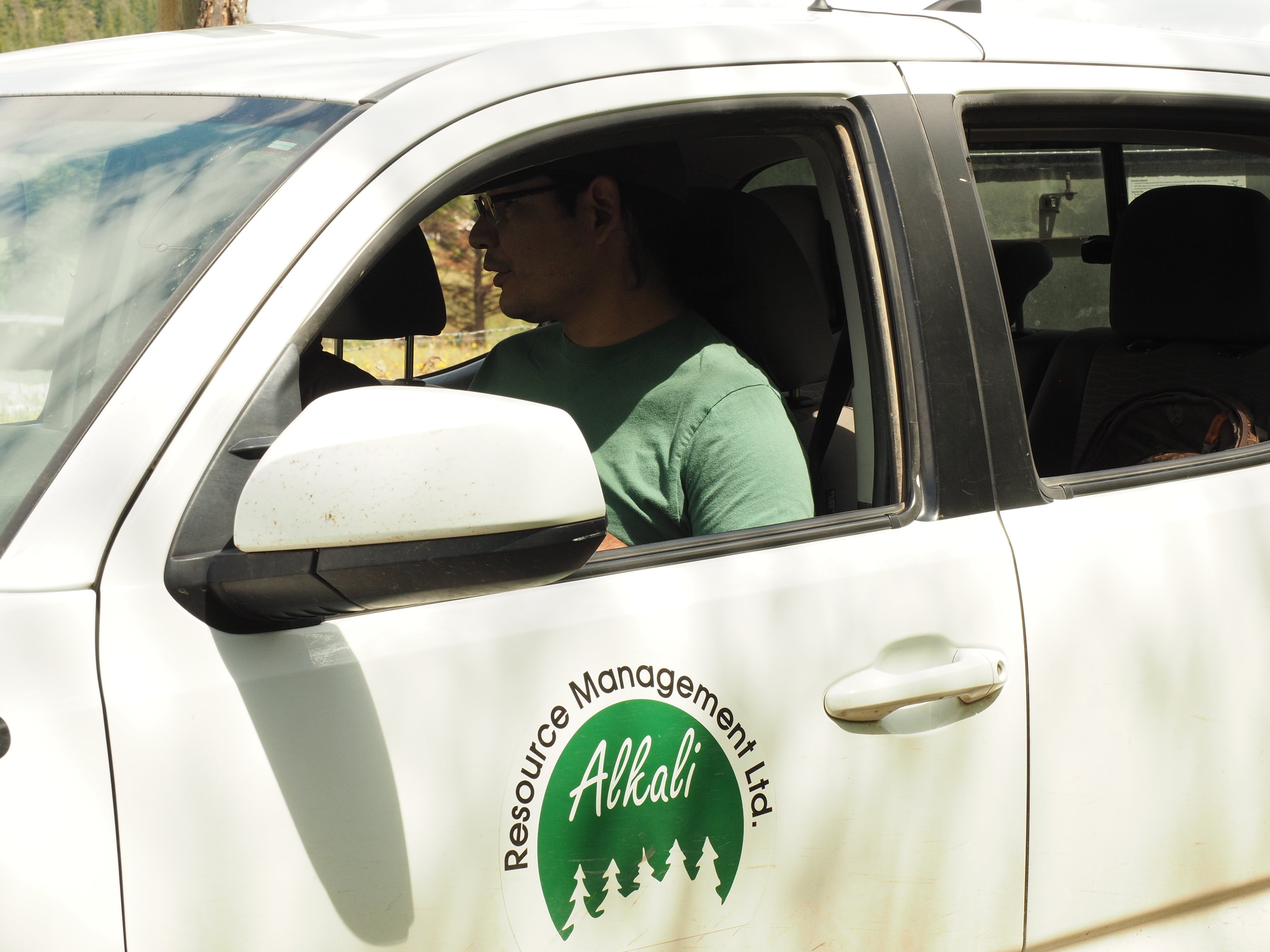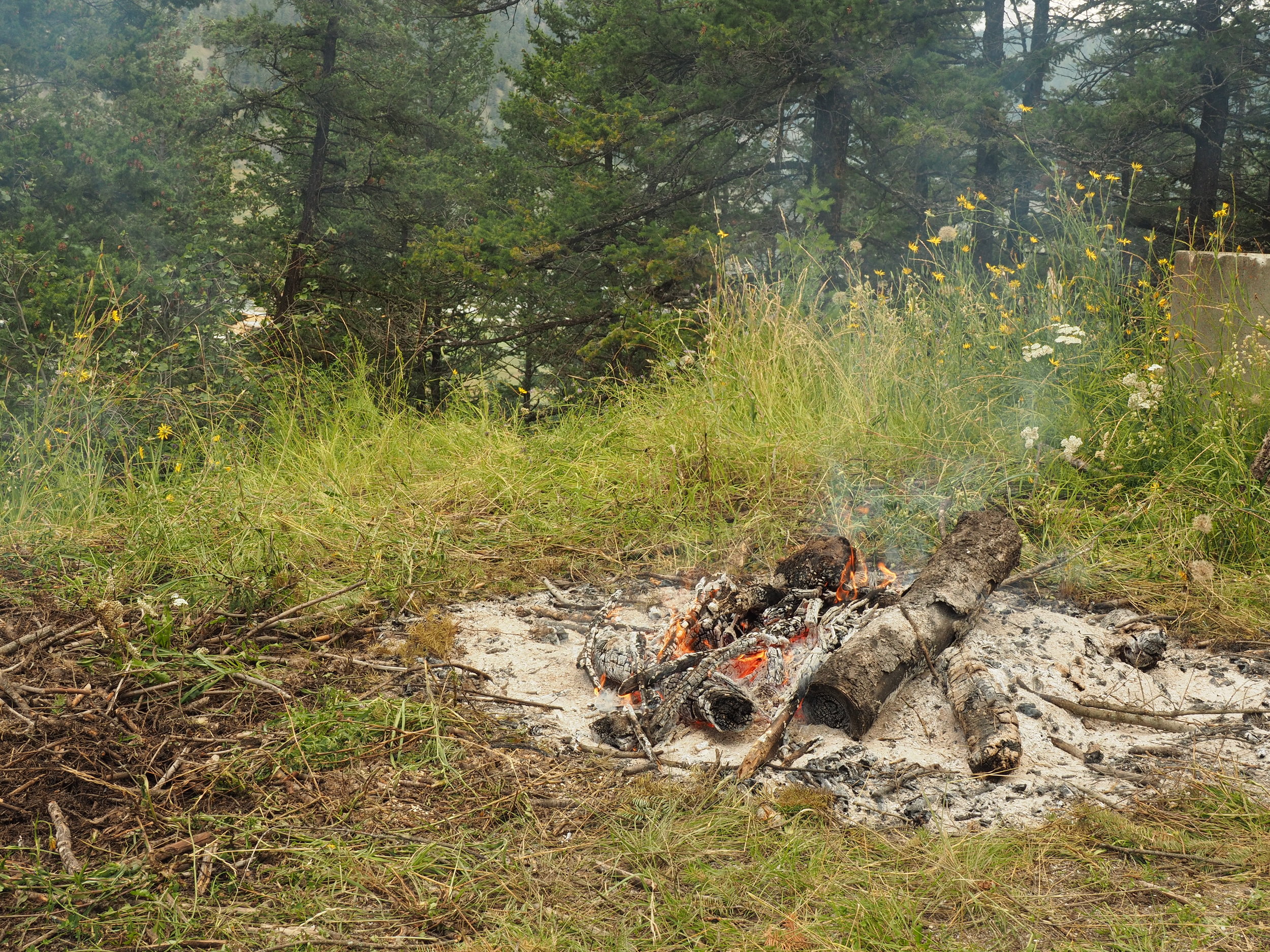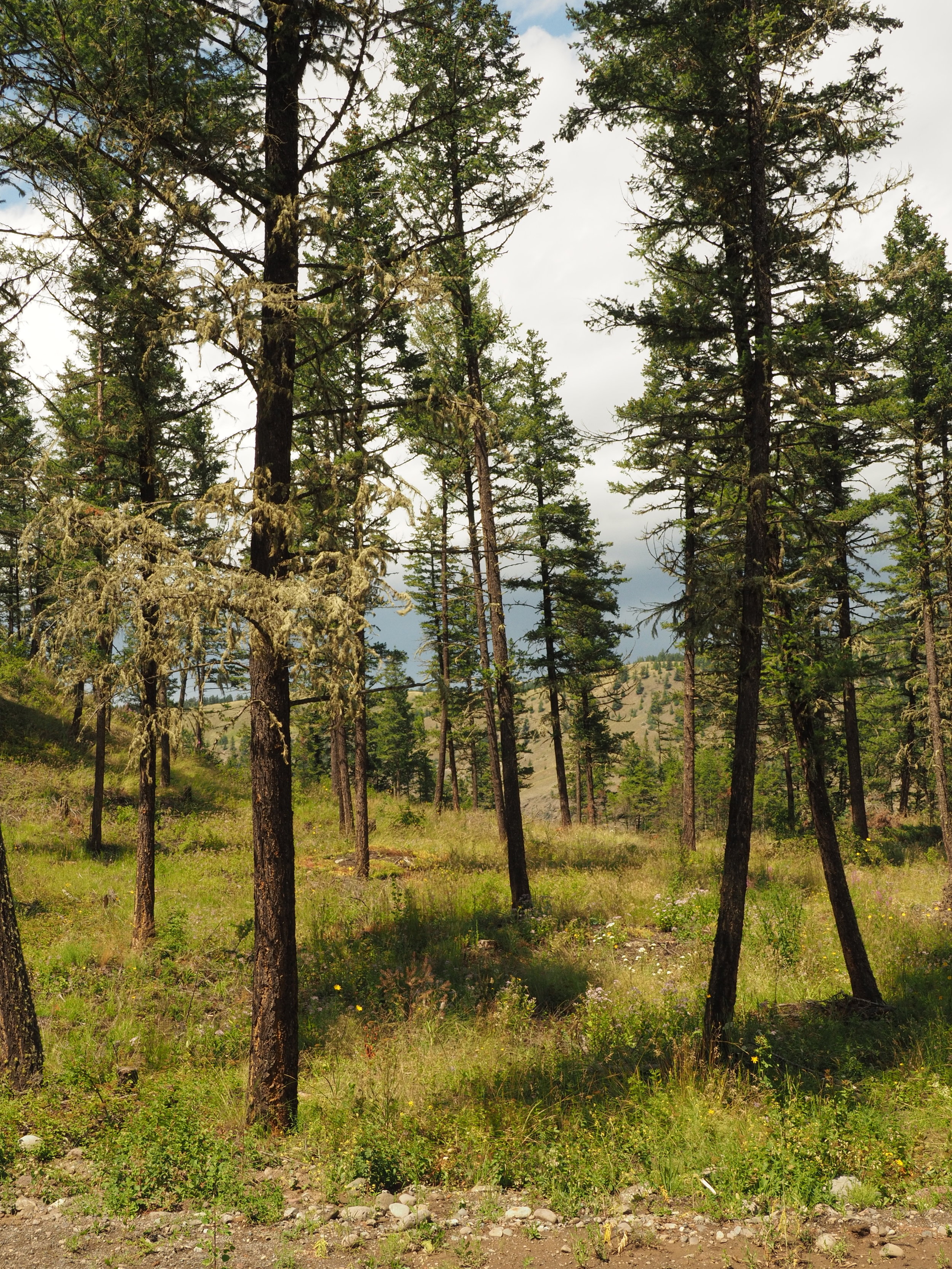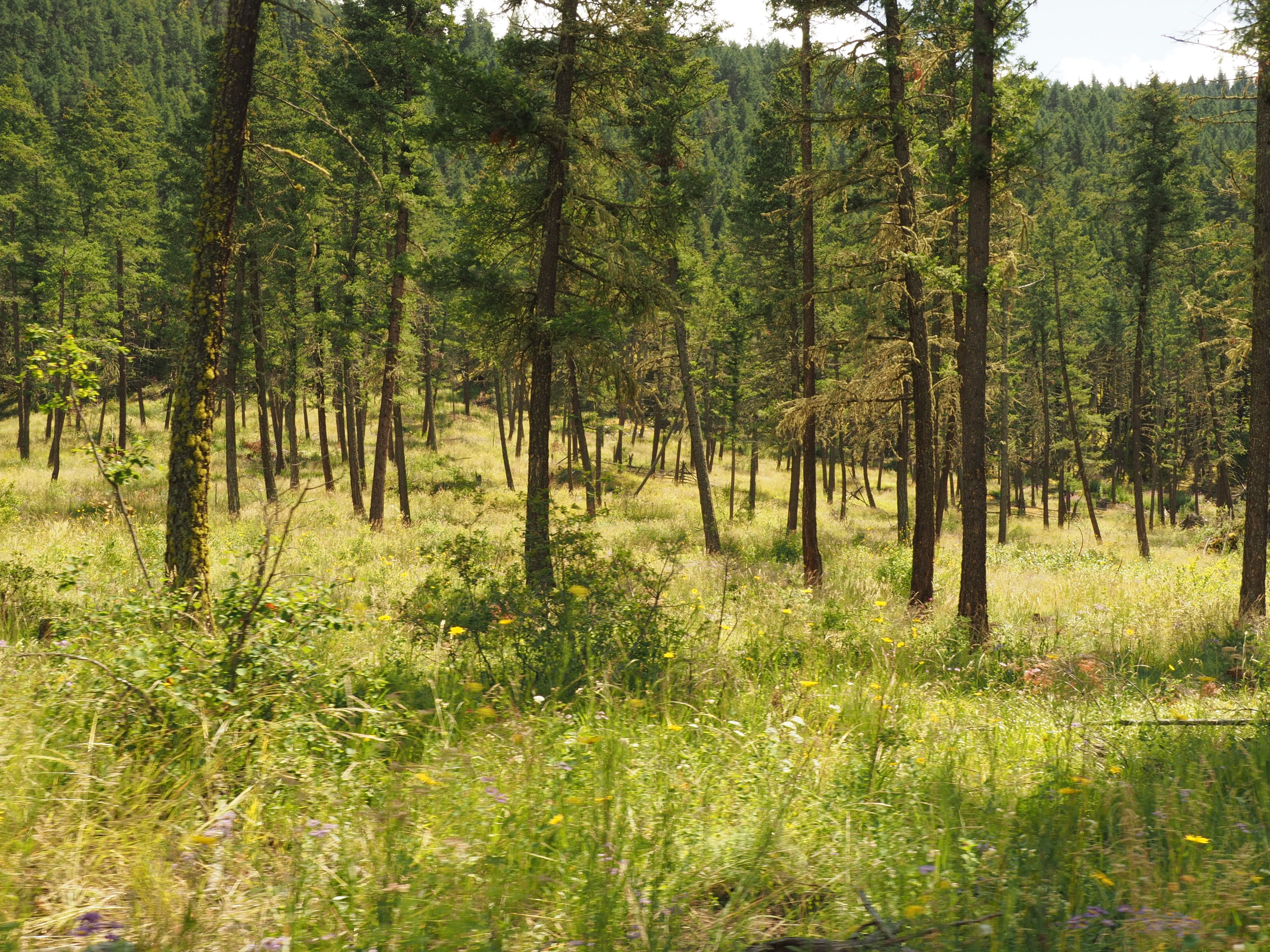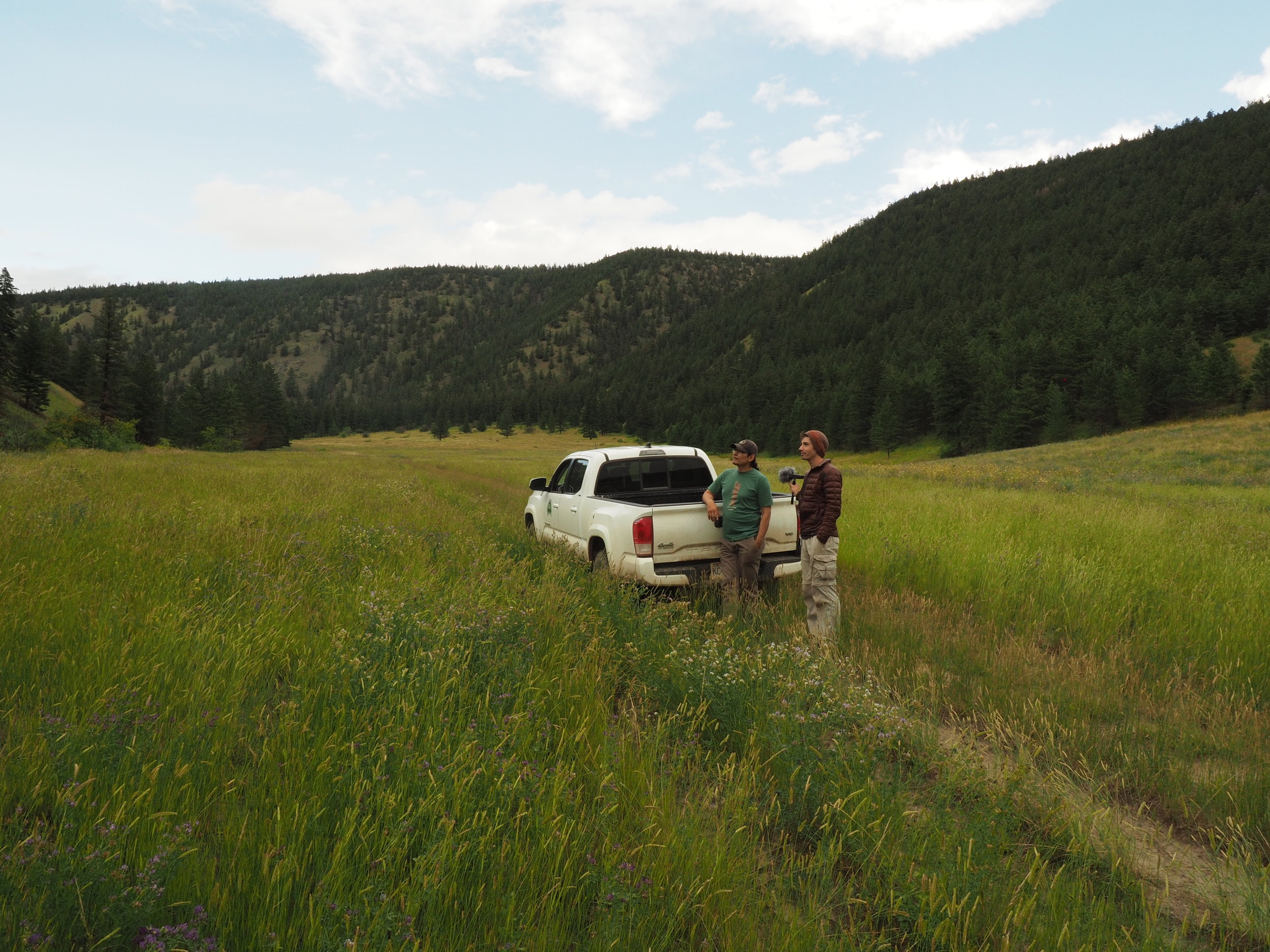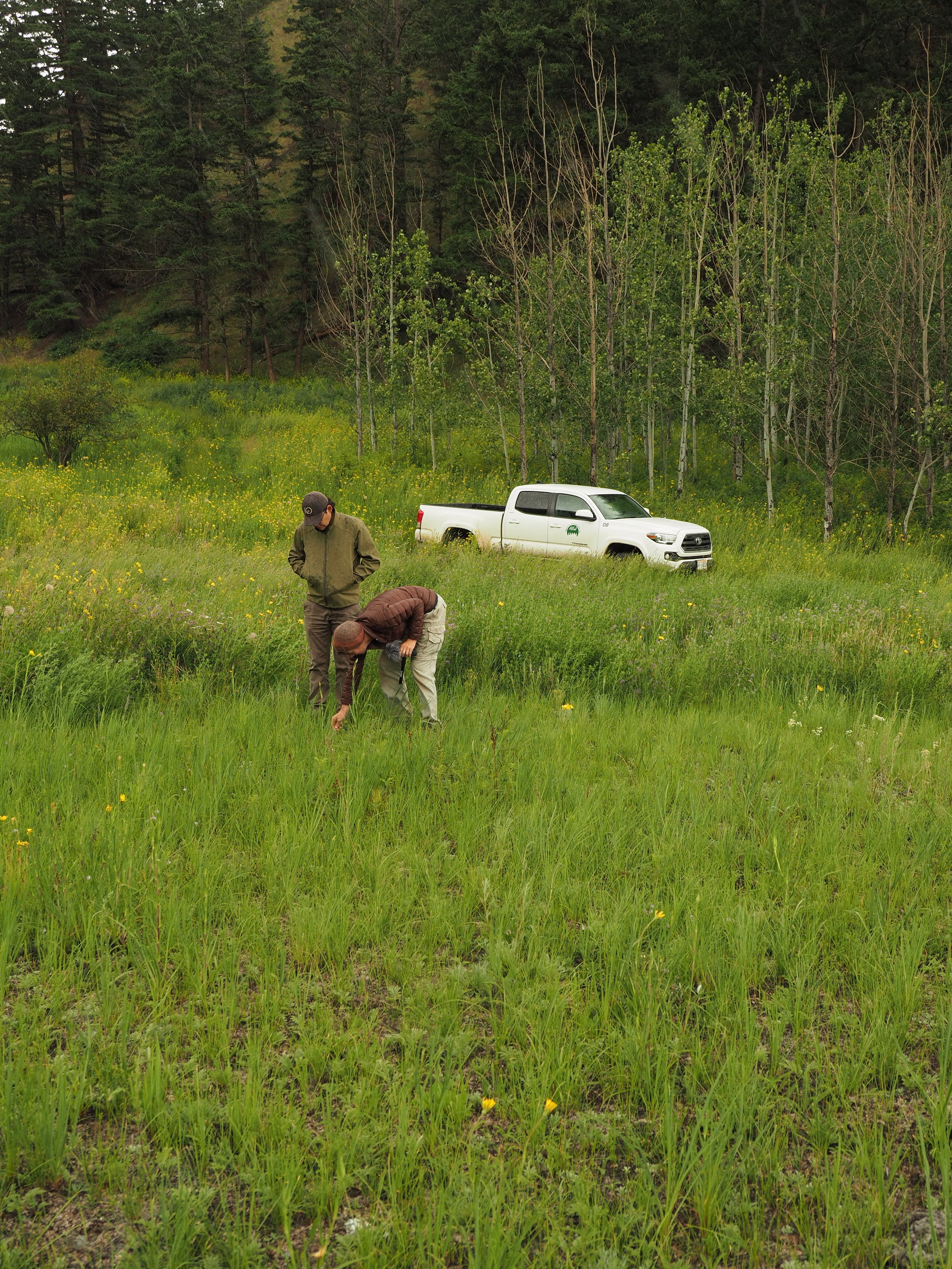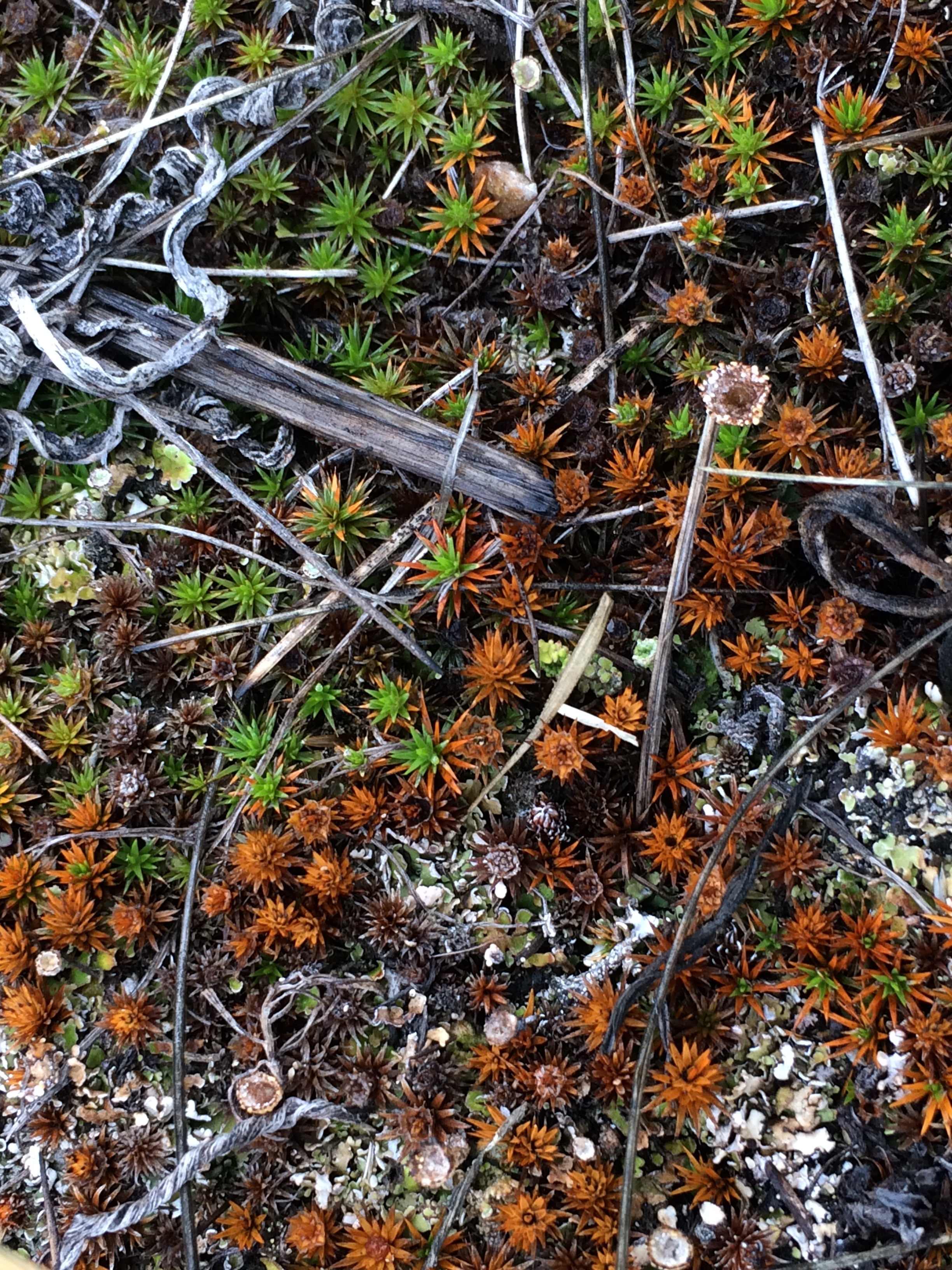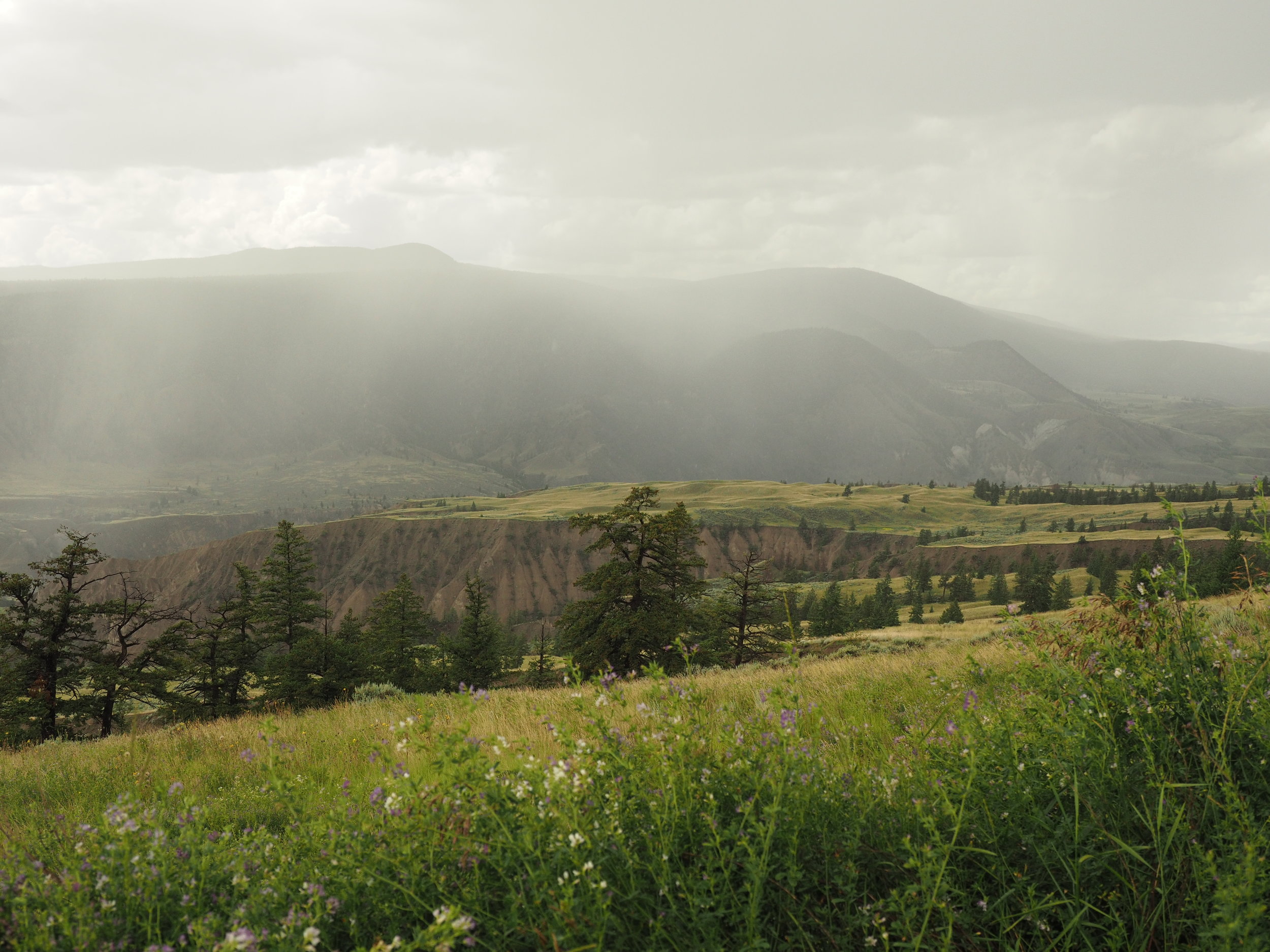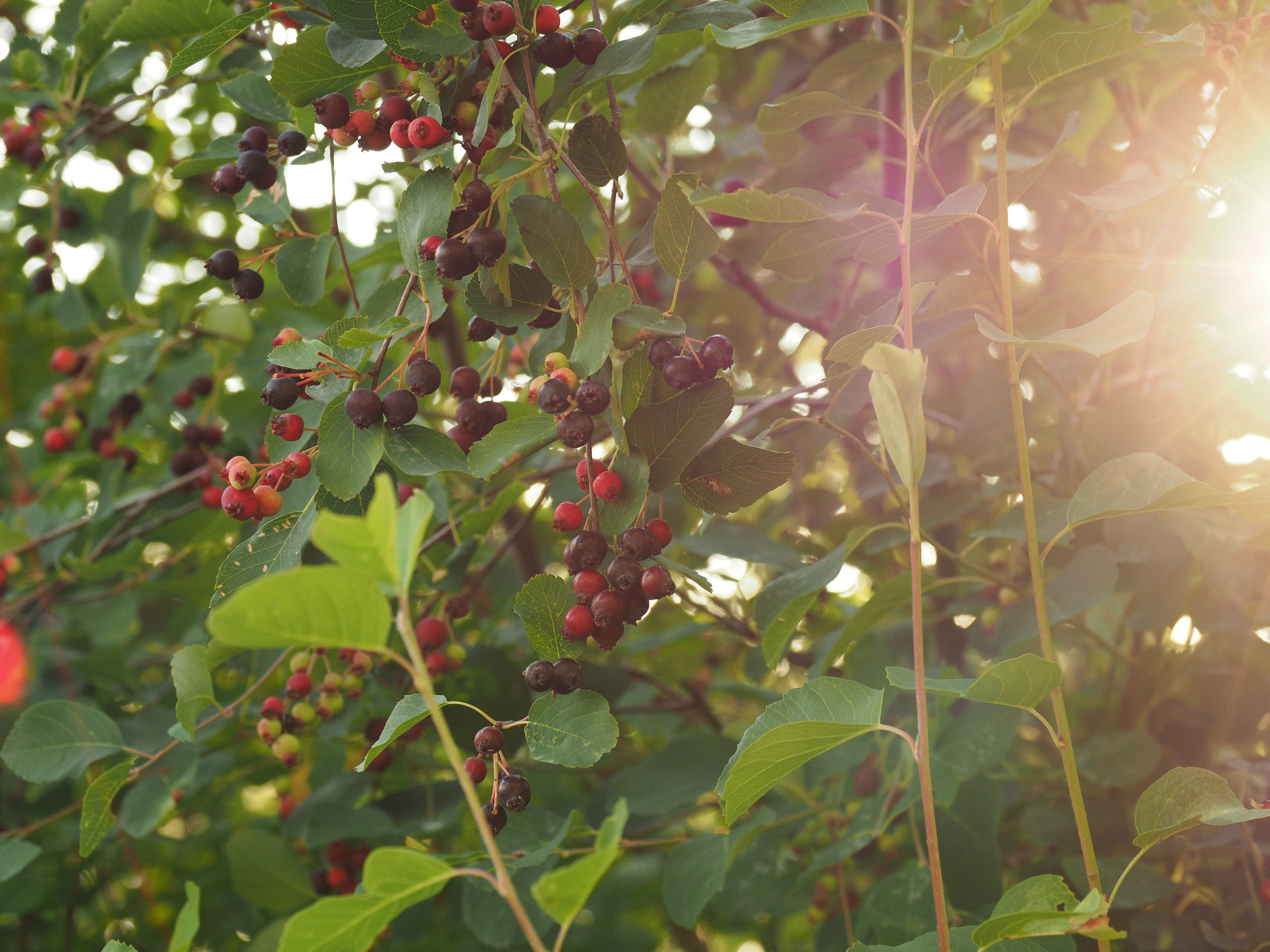Scorched earth near Ootsa Lake
(photo by Mendel Skulski)
Summary
Another year, another fire season. We’ve already had a lot to say about wildfire, forest science, traditional ecological knowledge, and prescribed burning, but we’re not done yet! In this episode, we tour the Province of BC (and dip down into Washington State) to meet vigilante fire fighters, researchers, and First Nations Chiefs: all working in their communities towards a future of true wildfire resilience.
This episode is a condensed version of a 2-part series on wildfire resilience produced for the Bulkley Valley Research Centre. If you want to dive even deeper, you can listen to both of those episodes here.
Photos of Burns Lake Southside & Alkali Lake:
Show Notes
This episode features Clint Lambert, Chief Maureen Chapman, Dr. Lori Daniels, Dr. Sonja Leverkus, Dr. Paul Hessburg, and Chief Francis Johnson.
Special thanks to the Bulkley Valley Research Centre, Leigh-Ann Fenwick, Navarrana Smith, Sheena Briggs, Dawn Hansen, Frank Varga, Bruce Blackwell, Les Husband, Ken Johnson, 102.3 The Bear, Cameron Bentley, Fern Yip, Simone Miller, Cassy Allan, Ilana Fonariov, Darren Stanislaus, and the Access to Media Education Society.
Music for this episode was produced by VALSI, Sergei Rachmaninoff, Cat Can Do, Jonathan Scherk, Ben Hamilton, Leucrocuta, Spencer W Stuart, kmathz, and Sunfish Moonlight.
A lot of research goes into each episode of Future Ecologies, including great journalism from a variety of media outlets, and we like to cite our sources:
Chapman, M., & Abbott, G. M. (2018). Addressing the new normal: 21st century disaster management in British Columbia: report and findings of the BC Flood and Wildfire Review, BC Flood and Wildfire Review.
Daniels, L.D. (2017, September 26). RE: 2017 Megafires in BC - Urgent Need to Adapt and Improve Resilience to Wildfire [open letter to BC Premier John Horgan & FLNRORD Minister Doug Donaldson]
Daniels, L.D., S.M. Hagerman and S. Ravensbergen (2018). Wildfire Prevention and Fuels Management in the Wildland-Urban Interface: BC Community Perceptions. Report to the Union of BC Municipalities, First Nations’ Emergency Services Society, BC Community Forest Association and BC Wildfire Service. May 2018. 30pp.
Hessburg, P. F. et al. (2015). Restoring fire-prone Inland Pacific landscapes: seven core principles. Landscape Ecology, 30 (10), 1805–1835. doi: 10.1007/s10980-015-0218-0
Jones, R. P. (2019, January 28). B.C. forests contribute 'hidden' carbon emissions that dwarf official numbers, report says. CBC. Retrieved from https://www.cbc.ca/news/canada/british-columbia/sierra-club-report-forest-carbon-emissions-1.4995191
This podcast includes audio recorded by THE_bizniss, Inge Jard Grønås, riversurf, and bigmanjoe, protected under Creative Commons licences and accessed through the Freesound Project.
You can subscribe to and download Future Ecologies wherever you find podcasts - please share, rate, and review us. Our website is futureecologies.net. We’re also on Facebook, Instagram, iNaturalist, Soundcloud and Youtube. We’re an independent production, and you can support us on Patreon - our supporters have access to cool supporter-only mini-episodes and other perks.
Future Ecologies is recorded on the unceded territories of the Musqueam (xwməθkwəy̓əm) Squamish (Skwxwú7mesh), and Tsleil- Waututh (Səl̓ílwətaʔ/Selilwitulh) Nations - otherwise known as Vancouver, British Columbia. It is also recorded on the territories of the Penelakut, Hwiltsum, and other Hul’qumi’num speaking peoples, otherwise known as Galiano Island, British Columbia.
Transcript
Introduction Voiceover 00:00
You are listening to Season Two of Future Ecologies.
[Firestarting sounds]
Fern Yip 00:06
I like to begin slow just to get it going.
[Ambient music begins over the sound of Fern making a fire]
Adam Huggins 00:09
I'm sitting on the ground in a quiet clearing in the forest. Across from me, my friend Fern Yip is kneeling, her fingers gripped tightly around what looks like a violin bow made out of sticks, which she's working furiously back and forth across a wooden dowel, causing it to spin and drill down into a piece of cedar on the ground.
Introduction Voiceover 00:32
Broadcasting from the unceded, shared, and asserted territories of the Penelakut, Hwlitsum, and other Hul’q'umi’num speaking peoples, this is Future Ecologies, where your hosts - Adam Huggins and Mendel Skulski - explore the shape of our world, through ecology, design, and sound.
Fern Yip 00:53
[Whispering] I think that we might have a coal... We might. We definitely have a coal in there. You see it's smoking now. I'm going to take, carefully... We have lots of time. It's easy to get excited and go, "Woah, I've got a coal!" Gently remove it... we got a lot of dust, which is great. It's a pretty big coal, I think. And then... If you wanna do the honours, actually...
Adam Huggins 00:56
You have a coal? I'd love to do the honours, what do I do? What are the honours?
Fern Yip 01:29
The honours are placing the coal in our beautiful little hummingbird cedar fluff nest...
Adam Huggins 01:36
Just nudge it in?
Fern Yip 01:37
Yeah, just nudge it in. There it goes.
Adam Huggins 01:39
Ahh, there it is! Ok.
Fern Yip 01:40
All that dust is great too, you can put that on top of it...
Adam Huggins 01:42
Ok, the dust can go in...
[Sound of fire starting, or maybe of breath on the coal]
Fern Yip 01:42
Yeah... Look at that light.
Adam Huggins 01:50
There it goes, there it goes!
Fern Yip 01:55
And the flame.
Adam Huggins 01:56
There it goes!
Fern Yip 01:58
Wow, there's the fire.
Adam Huggins 01:59
[hushed tones] Oh my god...
Fern Yip 02:00
What it means to be human!
[A blazing sound]
Woah! [laughter] That got hot!
Adam Huggins 02:07
[laughing together] Once you start the fire, you gotta be ready for it to burn!
Fern Yip 02:12
You do! Sometimes. That might have singed your eyebrows actually.
Adam Huggins 02:17
[still laughing] Or be ready to put it out!
[Music begins]
Fern Yip 02:20
Well, you look good that way though.
[Laughter fades out, music remains]
Adam Huggins 02:24
So Mendel, take a quick look at our podcast feed, and let me know if you see a pattern.
Mendel Skulski 02:30
Ahh... We have 14 full length episodes. And now, three of them are about fire.
Adam Huggins 02:39
Of course. But in our defense, it's a huge subject. After all, to quote my friend Fern, it's at the core of what it means to be human. If we're a little obsessed with fire, I'd argue that it comes naturally.
Mendel Skulski 02:55
And I guess that it's actually taken us this long to wrap our heads around it. So, should we tell them?
[Music flourishes]
Adam Huggins 03:03
Tell them what?
Mendel Skulski 03:04
About where we've been... What we've been up to.
Adam Huggins 03:07
Cat's out of the bag now. So, since our last episode on fire, we've toured the northern interior of the province of British Columbia. We've spoken to scientists, ranchers, foresters, hereditary chiefs, and the BC Wildfires Service about the future of wildfire and prescribed burning in our landscape. Last season, we talked a lot about the deep ecology of fire, and about returning fire to the land for cultural and ecological purposes at the local and landscape scales. Today, we're going to zoom way out and look at how fire is transforming whole bioregions in the boreal forest of Western Canada. What actually happens when fire threatens communities? And how can we realistically manage a dizzying range of values on lands that are meant to burn, especially now as we exist in the context of climate change.
Mendel Skulski 04:01
As you may already know, 2017 and 2018 were record breaking years in British Columbia in terms of area burned by wildfire. There were mass evacuations. And in the heat of the moment, a lot of public criticism about how the emergency response was handled.
Adam Huggins 04:18
We're gonna start off by meeting someone who got up close and personal with the 2018 fires.
[Cut to field recording, ambient background noise] Good morning, I'm Adam.
Clint Lambert 04:25
Clint.
Adam Huggins 04:26
Nice to meet you.
Clint Lambert 04:26
Good to meet you.
Adam Huggins 04:27
Thanks for coming out here to talk to us.
Clint Lambert 04:28
No problem.
Mendel Skulski 04:30
Um, your phone's in the car...
Adam Huggins 04:31
Oh, yeah.
Clint Lambert 04:32
Whatever you need, grab them. Then we'll jump in my dirty truck here and yeah. [laughter]
Mendel Skulski 04:38
Um, I'll sit in the front?
Adam Huggins 04:39
Yeah.
[Sound of truck starting up]
Mendel Skulski 04:51
Clint Lambert is a busy man. Not only is he a rancher, but also a politician. Clint serves as regional director of the Burns Lake electoral district E with the Regional District of Bulkley-Nechako. He took us all over the south side of Francois Lake, touring the postburn landscape of the massive Verdun and Nadina fires of 2018.
Adam Huggins 05:12
As we drove past stunning views of Tweedsmuir Park, we saw blackened trees and patches of earth scorched down to mineral soil. To us, most of the landscape still was quite beautiful in the expanses of fireweed and other post-disturbance plants. But to a ranching and timber community like Southside, the burn was a vivid and painful memory. Clint took us into the town of Takysie, a short stretch of buildings, most of which are tightly sandwiched between the road and a 500 hectare lake.
Clint Lambert 05:43
Okay, so the fire come right in here. I don't know how that house that we just passed didn't get burnt. But the fire come right to the road.
Adam Huggins 05:55
The people of Southside were given an evacuation notice at the beginning of August of 2018 as the fires grew. Of the roughly 1200 people who live in the community, around 200 stayed behind.
Clint Lambert 06:09
[laughter] Yeah, there was a lot of people that stayed. Yeah, yeah, I was one of them that stayed.
Adam Huggins 06:14
You stayed, why'd you stay?
Clint Lambert 06:16
Um, we stayed because pretty much you have to. The government, you know, like, everybody's kind of trashing the government because of this and that and whatever. But the reality of it was there was 600 fires in the province burning and there was nobody fighting the fire that was coming at us. So they just didn't have, you know, they just didn't have the resources. So we stayed and did what we could.
Mendel Skulski 06:47
The Southsiders felt that they had been abandoned. They had gathered their equipment to help the wildfire service, but it sat unused. They'd brought in dozens of volunteers, but they were reassigned to other fires. Frustrated with the response from the BC Wildfire Service, Clint and his compatriots formed an unsanctioned firefighting force, which earned the moniker The Wolf Pack.
Clint Lambert 07:10
And the guy that has the store here... Well, look at the sign right here. Look how hot it was... it burned right up here and, and you know like that fence is burnt in half right there and the sign is scorched. And their propane tank... He got back, he left and came back and the flames were right beside the propane tank. And he had an old truck here, an old water truck, and he was able to put the flames out. But you can see he lost buildings, a couple of buildings and stuff here.
Adam Huggins 07:49
For the Wolf Pack and the others who refused to evacuate, it was a grim choice: stay and put their lives and potentially liberty on the line, or go and wonder if they were leaving their homes and their livelihoods behind forever.
Clint Lambert 08:05
If that propane tank would have gone, everything was gone.
Adam Huggins 08:10
One of the major tensions at Southside was the feeling that equipment was made available by the community, but was underutilized by the Wildfire Service.
Clint Lambert 08:19
You know, at any given time, they had all kinds of equipment here. And, of course, ranchers, our equipment is old and wore out and broke down and we're trying to keep things together. But yeah, they were pretty stingy on allowing any help. It took a long time to get them to come around, finally.
Mendel Skulski 08:41
Stories like these - of vigilante firefighters, or evacuation confusion, or even the outright loss of a community - were not uncommon in the 2017 and 2018 fire seasons. After the unprecedented devastation in 2017 BC Premier John Horgan commissioned a review of the emergency response in order to make recommendations to the Province.
Maureen Chapman 09:04
If it's burning, it doesn't know a border, doesn't know where to stop at a boundary... And we're all invested in it. My traditional name is Shxwetelemel-elhot, which means "committed and gets the work done". Maureen Chapman, hereditary chief of Sq'ewa:lxw First Nation, which is out between Agassiz and Hope, part of this Sto:lo Nation.
Mendel Skulski 09:29
Chief Chapman, together with former cabinet minister George Abbott, toured British Columbia to learn directly from the communities that were impacted.
Adam Huggins 09:38
The resulting 140 page report entitled 'Addressing the New Normal: 21st Century Disaster Management in British Columbia'...
Mendel Skulski 09:47
Or just 'The Abbott/Chapman report'...
Adam Huggins 09:49
...was released in April of 2018. It made a whopping 108 recommendations to the provincial government.
Mendel Skulski 09:56
But don't let that scare you off. Reading the report is easy. Producing it was not so much.
Maureen Chapman 10:05
I was very determined that this would be truthful, and that we would give the best recommendations that we had based on everybody we talked to, not just a few. I'm not here to please government. I'm here to get the truth. And that I think is why Horgan chose me, because he knew I wasn't gonna be compromised.
Mendel Skulski 10:31
And the report is uncompromising. There are way too many recommendations to even attempt to summarize here. So we're going to zoom in on recommendation number one.
Maureen Chapman 10:41
The one most important to me was number one, and that was that First Nations communities were involved right from the beginning.
Adam Huggins 10:51
The first recommendation is to establish Indigenous peoples as true partners and leaders in emergency management by including First Nations from the beginning and at all levels of planning, decision making, and implementation. On its face, Mendel, this recommendation doesn't seem to have anything to do really with wildfires. So why is it first?
Mendel Skulski 11:13
Well, for starters, there are 198 First Nations in BC, many of which are located in small, remote communities that are on the frontlines of climate change and are at high risk for fire or flooding. Maureen describes her visit to the Ashcroft Indian Band in Cache Creek, BC.
Maureen Chapman 11:31
I don't know if you've ever been up there, at Ashcroft, but it's like, the hills are here and there was just like, this fire just went right through this tunnel and the wind, of course, was blowing, there was no chance. I mean, if you could get out of the way, that's all you could do. There was nothing that they could have even tried to save. It just devastated parts of their community, and the interesting thing was it burned all around, it burned houses to the ground, all of their archives were still in boxes, paper copies, and those all got destroyed. Years of their community information that resonated in how fierce that was. It was very, very fast fire as well.
Adam Huggins 12:22
That's awful.
Mendel Skulski 12:25
Yeah. And while some damage is inevitable during a natural disaster like this, it's clear from the report that most communities were poorly prepared for these conditions, and some real challenges emerged during the disaster response. The report includes accounts of community members stranded far from home, who couldn't return for weeks, or even months. Local help was offered and left unused. Out-of-province fire crews were deployed in areas that were unfamiliar to them, and then shuffled around at two week intervals. There was little clarity about where official communications were being distributed, so misinformation on social media filled the void. Many people just didn't know what to do, or where to go in the event of an emergency, even if the community had an emergency plan on the books. And all of this was exacerbated by a lack of communication between First Nations communities and settler communities.
Maureen Chapman 13:20
The First Nations assume that all of these entities won't talk to them and vice versa. "The First Nations aren't interested in talking to us," but you don't know that! There's a lot of assumptions made, I find. And once you get people to a table, I've found even really controversial topics, once you get them sitting across the room from each other, and talking to each other, it dispels a lot of what their assumptions were. And that's the key, even though you think it's going to be controversial, it's better than the hearsay and it never getting resolved or going anywhere, because it goes in circles forever unless you sit down and sit across from each other. I know the frustration, especially like in government, it just takes forever for that cog to turn to get changes. But I think when government asks you to go out and do some work, then they better be listening to what these recommendations are, like, make this real, because you asked, you paid for it. And I think it's important that it's the community voices.
Mendel Skulski 14:39
Since the Abbott/Chapman report was released, the BC Wildfire Service has already made changes to adopt 19 of the 108 recommendations. 76 more are in progress, and the remaining 19 are being analyzed further. But for the communities that felt left behind, the memory of 2018 is not fading fast. Clint is concerned that the mistrust of government orders is smoldering into a dangerous situation.
Clint Lambert 15:07
People that left, you know, obviously [laughs] are not going to leave next time. And some of those people that have have told me that "I'm gonna stay and we're not..." they're people that should leave. Like in Australia they had actual, you know, you had to take certain firefighting courses to be able to stay and defend your own property: I don't see that being a bad idea. People shouldn't just be allowed to stay and fight fire if they don't know what they're doing. You know, but who am I to tell them that they can't protect their own property? Because I'd be a hypocrite, because I stayed and protected my property. [laughs]
Adam Huggins 15:51
Clint acknowledges that the BC Wildfire Service has its own roles and priorities that it needs to follow.
Clint Lambert 15:57
Like they said, "we've done everything by book." So now we have to change the rules in the book. In the past, these fires have been away from communities. And now that they're on top of communities, the forestry is gonna have to come up with a different way of dealing with or fighting or working with the community to put it out. [sounds of getting into a truck and starting it] Are we going to just keep doing what we're doing, and hoping that it gets better? Or do we try something different?
Mendel Skulski 16:40
And so, to find out what we should be doing differently, we went to one of the most outspoken forest scientists in the province.
Lori Daniels 16:47
Yeah, so my name is Lori Daniels. I am a professor of forest ecology at the University of British Columbia. And I run the tree ring lab in the forest and conservation sciences department.
Mendel Skulski 16:58
As you might already know, tree rings can tell us much more than just how old a tree lived to be.
Lori Daniels 17:04
And we describe it as reading between the lines.
Adam Huggins 17:07
Scars embedded in tree rings can tell us stories of insect damage, wind storms, cultural modifications, and, of course, fire.
Lori Daniels 17:16
Forest fires come in a whole bunch of types and sizes and severities. So a very intense forest fire that's burning from tree top to tree top, which is called a crown fire, it actually does a lot of damage to the trees and the majority of the trees are killed. But you can also have forest fires that are burning down along the surface of the ground. So they're burning the plants and the vegetation on the surface, they're burning around the trunks of the trees, but not necessarily spreading the flames up into the tops of the trees. So if the heat of that fire is intense enough, it can cause damage to the trunk of the tree without actually killing it. And so it's that heat, it damages it, and yet other parts of the tree survive so it begins to form what we call a scar. Now some of the trees in our anterior dry forests here in British Columbia have really thick bark, and they're adapted to those surface fires. And so an individual tree can survive multiple surface fires in its life. We often find trees that have anywhere from 5 to 12 fire scars on them. And our record is a ponderosa pine that has over 40 fire scars embedded in a single tree.
Adam Huggins 18:22
That tree lived to be over 500 years old, with surface fires regularly toasting its bark at least every eight to nine years. If any of those fires had become a crown fire, that tree would never have lived through the centuries.
Mendel Skulski 18:36
But in the age of industrial forestry, it's those same surface fires that have been suppressed.
Lori Daniels 18:42
They're the ones that we have very, very effectively put out. So we've virtually eliminated them from the forests, which mean in absence of surface fires, all the small trees have grown into form ladder fuels, the forests are much more dense, and you've accumulated, you know, needles and leaves and branches and woody debris over many decades, so the fuel loads are really high. And so, ironically, the places that are most fire prone in terms of weather and climate are also the places that have these really dense forests and accumulated fuels.
Mendel Skulski 19:16
To recap for new listeners, ladder fuels, as Lori mentioned, are exactly how they sound. It's tricky for a fire to go from the ground up to the canopy. Unless of course, it has something to climb on: first shrubs, onto young trees, and then further, up branches and into the crown.
Adam Huggins 19:36
Which makes intuitive sense if you've ever built a campfire, especially if you were using a bow drill. Big logs don't tend to catch sparks until there's a lot of smaller stuff already burning. By suppressing surface fires, we've effectively stockpiled our forests with just the right kind of kindling to grow into a crown fire. Cut block debris, standing dead beetle kill, and densely planted, highly stressed, even aged stands of, say, lodgepole pine.
Lori Daniels 20:02
My concern about the fires in the last few years is they're not burning through fuels that are natural ecosystems. They're burning at high intensity through altered fuels, fuels that've been altered by fire suppression, through insect outbreaks that have exceeded-- they're unprecedented in their size and severity, and are leaving behind fuels through our management, through our salvage responses, that are also unusual. And so the fires that we're experiencing that are of such high intensity and severity, I don't think those are typical of the fires that burned historically in these landscapes. We have such a tremendous diversity of ecosystem types, and associated with them, the wide range of historical and contemporary fire regimes, that it makes trying to come up with a solution that's one size fits all absolutely impossible.
Adam Huggins 21:02
This is always the challenge with complex ecological systems. It's dangerous to draw generalizations from them. And to be honest, for us podcasters it's this reality that keeps us up at night. But there are a few principles that apply no matter where you are. Chief among them is that proactive solutions are the best way to safeguard communities against destruction.
Mendel Skulski 21:23
And really, we need to be looking beyond the wildland urban interface, beyond the two kilometer buffer between forests and communities. We need to rethink how we manage forest lands in general.
Lori Daniels 21:35
There's a choice then, for us to use a technique called managed wildfire. So when fires ignite in places where they don't put homes and lives at risk, and when they're burning under fire weather conditions that are unlikely to produce a conflagration that we cannot stop, then those fires can be left to burn on the landscape. There will always be fires, a subset of fires, that we have to suppress because they put lives and homes and critical infrastructure at risk. And so we will choose to suppress those. And those are often the areas where we also need to then be thinking about actively managing the vegetation to reduce fuel hazards and to reduce the risk of fire, either igniting and spreading from those areas or spreading into those areas. So those are going to be our kind of active, proactive fire management zones and where hopefully, people will also take the responsibility to firesmart their homes and properties simultaneously.
Mendel Skulski 22:32
Beyond just allowing certain wildfires to burn, there's a need to return prescribed fire to the land where appropriate.
Lori Daniels 22:39
I think that as people become better informed, they might be more accepting of prescribed burns as a type of management tool. [shimmering music] The ecological principles that we're founding our management on are outdated. There have been entire paradigm shifts in ecological theory and in our understanding of disturbance and the role of change and environmental change and climate and the way ecosystems function within that context over the past 20 to 30 years. And yet the foundational systems, the management systems, the classification systems, the management paradigms that we are employing are based on pre-1970s ecosystem theory. And we're living the consequences of that.
Adam Huggins 23:36
Consequences that of course include massive carbon emissions from massive wildfires. For me, the role of wildfires in forested ecosystems is one of the major canaries in the carbon coal mine.
Mendel Skulski 23:49
Carbon coal mine seems a little redundant.
Adam Huggins 23:52
And on the subject of carbon, Lori told us something that we were shocked to learn.
Lori Daniels 23:57
When we do our carbon accounting, and as we report both nationally and to the international community, wildfires do not count. They are not considered a source of carbon dioxide into the atmosphere that we have to account for when we do our carbon budgets.
Mendel Skulski 24:16
But strangely, prescribed burning is factored in. It just doesn't seem like an honest way to present the facts or incentivize corrective action. Last year, wildfire emissions tripled the combined output of human activity in BC.
Lori Daniels 24:32
The report that came from the Canadian Forest Service then is, if you take into account the carbon being emitted by forest fires, and by insects like mountain pine beetle, and defoliators like Eastern and Western spruce budworm, our forests in Canada have been net emitters of carbon. We have been sources of carbon as opposed to sinks since the year 2001..
Adam Huggins 24:58
I'm just going to let that sink in for a minute. What Lori is saying is that Canada's boreal forests have actually released more carbon than they've taken in over the past two decades. And I don't know about you, but that gives me a huge sinking feeling, like smashing that piggy bank that you've been saving for a rainy day, and finding nothing in it but ashes. Wildfires play a major role in this dynamic, but going from 100 years of suppressing fire in order to protect assets, and then suppressing fire to prevent carbon emissions? That just isn't going to work. We needed some perspective on this. So we called up someone who works with fire in the boreal forest every day.
Sonja Leverkus 25:41
I personally have challenges with discussions around changing climate and carbon sequestration because I do believe that it all depends on your temporal and spatial scale. When the discussion comes around wildland fires and prescribed fires emitting carbon, I would suggest that we don't only think about carbon emission or carbon source or carbon sink at time zero. I'm a firm believer that we need to be thinking about time since fire. And in my brain and in my schooling, in my opinion, and what I write about, time since fire is not only when the flaming is happening and the combustion is happening and smoke is going into the air, but two months later, as the vegetation is starting to regrow, and potentially put carbon back into the ground, and then perhaps a month later, when an animal comes along, and browses and grazes on that vegetation, so that's just in a short time since fire. So, when I hear people talking about changing climate and interaction with carbon sequestration, my question is often, "Well, what's the timescale and what's the space scale that we're discussing?" Because it's not always going to be black and it's not always going to be smoking.
Mendel Skulski 27:00
Meet Sonja. We couldn't make it all the way up north to Fort Nelson, so she got a chair and a microphone at her local radio station, and we called her up.
Sonja Leverkus 27:09
I'm Dr. Sonja Leverkus. I have a PhD in natural resource ecology and management with a specialization in pyric herbivory and landscape ecology.
Adam Huggins 27:19
Sonja's fire credentials don't end there. She has an ecological consulting firm, as well as a hands-on wildfire management, prescribed burning, and wildfire-fighting company where she serves as an ignition specialist. She's certified as a wildland fire practitioner, and besides that, she's a registered professional biologist, professional agrologist, a forester-in-training, and an adjunct professor at the University of Alberta.
Mendel Skulski 27:43
In other words, in the world of prescribed fire, Sonja is involved at every level.
Sonja Leverkus 27:49
I do everything from writing and developing prescribed fire burn plans to prescribed fire strategies. I also teach fire courses, I'm a certified BC Wildfire Service instructor, and I have developed a series of prescribed fire schools along with my colleagues from Oklahoma State University. And our team teaches people about prescribed fire. We do a hands-on approach, so we learn in the classroom and then we also go out into the field and do prescribed fires together.
Adam Huggins 28:23
Once we had a sense of Sonja's seemingly limitless energy for practicing burning and fire advocacy, we wanted to take the temperature of prescribed fire in BC.
Sonja Leverkus 28:33
There are many people who talk about prescribed fire, but there are very few of us who are willing, dedicated, and able to actually put fire on the land. I would say that prescribed fire is consistently brought forward in various discussions at various levels in the government and non-government throughout the province and the country. But I would also say there's many challenges associated with implementing prescribed fire in this province. I think that one of the great challenges, and this speaks to government and the public and society as a whole, is just this lack of acceptance and understanding of the important role that-- not only the role that fire has on the land, but that fire is a natural process and ecological process that is very important to many different species. I think that there's also-- one of the challenges is the lack of understanding of that critical interaction between fire and ecological disturbances. So, a lot of my education and specialization is in pyric herbivory. And that's the fire-grazing interaction. So how fire across the landscape is important for different herbivores. But even more than that, having a shifting mosaic, so a distribution of time since fire across a broad landscape, is very, very important for biodiversity. And that shifting mosaic is kind of like a patchwork, where we see recent fire across the land, and longer time since fire across the land, and different animals and different values require this varying spatial temporal distribution of fire across the land. And I think that is something that's very important for the public and and our decision-makers to understand.
Mendel Skulski 30:25
This idea of a shifting mosaic is exactly what we've ignored under our conventional forest management. The type of forestry we're used to could be called static management, the boundaries between woodlots, old growth management areas, and parks and recreation, they're all fixed, and we try to prevent any kind of disturbance which could interrupt our master plan.
Adam Huggins 30:47
Natural forests, the forests that all wildlife evolved alongside, the forests that we need if we're going to become truly wildfire resilient... those forests have patches of trees of different ages in different densities. And not only is the forest patchy, the patches themselves vary widely in size and distribution.
Mendel Skulski 31:05
And, most importantly, they change. [background music abruptly ends] We wanted to learn more about how we might create these shifting mosaics. So we headed south to Eastern Washington, positively tropical by Canadian standards.
[Groovy music begins]
Paul Hessburg 31:29
I'm Paul Hessburg. I'm a forester and a research landscape ecologist with the US Department of Agriculture Forest Service. I'm a part of the Pacific Northwest Research Station. We have labs throughout Oregon, Washington, and Alaska and I work in a lab in eastern Washington, the town of Wenatchee.
Adam Huggins 31:50
Wenatchee is a beautiful town on the eastern foothills of the Cascades, surrounded by orchards. In the aftermath of major wildfires up and down the coast, there have been a bewildering number of sometimes conflicting prognoses delivered by different scientists through a not always scientifically literate media. Paul has studied fireprone landscapes for over 40 years, and he is able to deftly situate the elements that drive them.
[Music fades out]
Paul Hessburg 32:16
The science is really clear that regardless of geography, the area that's burned is driven by the changing climate. So area burned annually is driven and its increase correlates beautifully with the signature of the climate in each geographic area. The severity of fire is driven by an interaction between fuels and the climate. You need fuels for energy, really, so severity has to tie to fuels, and we know that it does, but it does so in a variable way, by geographic area.
Mendel Skulski 32:54
I think this distinction between area burned and burn severity is really useful. With climate setting the menu, it's really not a question of whether or not we'll be having fire. It's how we want that fire served.
Paul Hessburg 33:07
But fire severity is driven by this nexus of how the fuel commingles and interacts with the particular climate that's going on. And it's the only variable in the equation that we can actually do something about. We actually have the opportunity to manage that particular variable and we can do it intelligently.
Adam Huggins 33:27
We've already discussed some of our management practices, which are well established and widely employed. The biggest disagreements arise when we try to decide where, when, and how they should be employed at a landscape scale. And at serious risk of redundancy, the biggest pitfall we've encountered is assuming that what works in one place will necessarily work in another.
Paul Hessburg 33:50
If you hear a one size fits all answer, be instantly suspicious about it.
Adam Huggins 33:55
That being said, we are now about to make some broad generalizations.
Mendel Skulski 33:59
Not just generalizations, Adam: principles. Paul brought together a consortium of scientists who are leaders in their areas to create what he calls a co-managed co-rendering of the science.
Paul Hessburg 34:11
We basically said, "Can we go through the literature together and synthesize hundreds of research articles that give us some insight on a shortlist of things that if we do them would move us onto solid ground." There's a lot more principles that we could write. But it's hard to keep them in RAM. So what does the shortlist look like, right?
Adam Huggins 34:35
You know, Mendel, lately I've been really feeling like I need a RAM upgrade to keep up with everything.
Mendel Skulski 34:39
Yeah, I uh…
[Rustling papers]
Adam Huggins 34:41
You have something there?
Mendel Skulski 34:42
I, I thought I… Oh, yeah!
[Fumbling with disk]
Adam Huggins 34:45
Chuck it in!
[Inserting disk, computer loading chimes]
Robot Voice 34:55
Principle one.
[Gentle chime music]
Paul Hessburg 34:57
Landscapes: they're hierarchical. They're like nested Russian dolls. There's a very broad scale regional landscape, and regional landscapes differ one to another. So there isn't a recipe about what hierarchies look like from one geographic area to another, but we notice that every area has them.
Adam Huggins 35:17
The first principle is all about scale. Different ecological patterns and processes operate at different scales. For example, biogeoclimatic zone, sub zone, and variant here in BC. Management actions should be tailored to the appropriate scale. Also, the scales are connected by both bottom up and top down forces. What we do at one scale will have ripple effects throughout the system.
Paul Hessburg 35:42
If you want to restore forests in any place, you have to be thinking about at least three levels. What we do at one level influences pattern and process at the next level.
Robot Voice 35:56
Principle two.
Paul Hessburg 35:57
The second principle is that if we want to know how to tailor patterns back to the landscape, what is a simple template that we can use? It's topography. If you look at a map of topography of north and south aspects, ridge tops, and valley bottoms... when I superimpose that on a terrain model, I can literally see in exquisite detail how topography and the map of soils, and the map of land surface forms, influenced the productivity and the growth of forest, the kind of forest, and the fire regime of forest.
Mendel Skulski 36:34
We got into an extended conversation with Paul about this principle. Because while topography can provide an excellent template to guide restoration, its effects vary from region to region. Suffice it to say that, in Paul's region, south facing slopes mean open, low density forest and frequent fires, while north facing slopes feature denser forests and less frequent, higher intensity fires. That might be true where you live, or it might not. The template itself will change. But the principle of topography as a template is a constant.
Robot Voice 37:09
Principle three.
Paul Hessburg 37:12
The third principle is that wildfire is not only an essential process, but it's the engine of the system. You not only can't take it out, it's really important and super clever to keep it in the system but in the right way. And what drives wildfire? That's patterns of non-forest and how they interact with forest successional patterns over space and time. So that's the fuel that drives the engine.
Adam Huggins 37:39
The third principle states that disturbance and succession drive ecosystem change. If disturbance, in this case wildfire, is the engine, and forest landscapes in various stages of succession are the fuel, then we should focus on either allowing wildfire to restore healthy successional patterns or to restore them ourselves. Right now, humans are a, if not the, primary driver of ecosystem change, and something of a drunk driver that. To step out of that role, we need to work with and not against natural disturbances.
Robot Voice 38:16
Principle four.
[Eerie ambient music mixed with birds, gradually growing in intensity]
Paul Hessburg 38:17
The fourth principle is that wildfires over space and time produce severity in what we call patch size distributions. And from studying lots of fires, we found that most of the historical fires were small to medium size. So, what's the role of the small fire? Well, it's to re-complexify the landscape burned by large fires. And that's what we see. Small and medium sized fires historically blocked fire flow under all but the most extreme fire weather. And under the most extreme weather, the large fires occurred, and they reduce complexity. Inside of a large fire, it's not all high severity. In the native regime, it's this incredibly complicated patchwork of low, mixed, and high severity fire. But it was a big event. It was varied because the other fires were constantly reducing fuel. So you didn't get one severity signature out of those big events, you got this incredible mix. So, we don't manage the frequency of the large patches, we manage the frequency of the small and medium sized patches. They manage the frequency of the larger patches.
Mendel Skulski 39:27
You could spend hours talking with Paul about patch size distributions, and we literally did. The main takeaway from the fourth principle is that the relative proportion and distribution of differently sized forest patches is an emergent property of a given fire regime. Our problems start when we cause landscapes to deviate from that pattern. So learning to recognize a region's appropriate patch size distribution is key.
Robot Voice 39:53
Principle five.
Paul Hessburg 39:55
The fifth principle is that logging took the large and the old trees, and they were climate and wildfire tolerant and they were a phenomenal genetic legacy. If they survive tremendously well, they're also a great way to store genes, right? So, keep what you have and make more of them and these are in the fire tolerant species.
Adam Huggins 40:19
Principle five: keep those big trees alive. In open forests, older trees can survive low intensity fires and provide an essential seed source for regeneration. In the artificially dense forests created by fire suppression, older trees sometimes need our help to clear accumulated woody debris and fire ladders that put them at risk. Either way, respect your elders.
Mendel Skulski 40:41
And leave room for alders. That's principle five and three quarters, on us.
[Mellow piano music in the background]
Paul Hessburg 40:47
Sixth principle. It's one of my favorites. Patches are really landscapes unto themself. They're the finest scale landscape in our Russian doll analogy. Trees naturally regenerate in clumps and gaps. And, as it turns out, that's highly influential to creating very fine scale habitats for species that live in a small area. But it also changes the way fire behaves at that fine a scale. And how it behaves at that finer scale influences how a fire can actually move through a local landscape. So, how we manage the clumpiness of trees and the gap sizes is important to building a local landscape that's high functioning.
Robot Voice 40:47
Principle six.
Mendel Skulski 41:32
The key to understanding principle six is that even at a small scale, forest patches aren't homogenous. They consist of clumps of trees of different ages, with small or large gaps in between. If you've ever walked in a forest that wasn't planted by people, you understand this intuitively, but it's easy to forget to preserve this fine scale heterogeneity when you're restoring landscape at scale. Just remember:
Paul Hessburg 41:56
Clumps and gaps, baby.
Robot Voice 42:00
Principle seven.
Paul Hessburg 42:03
The seventh principle, it's actually not that hard. It's really intuitive. When European settlers crossed into the West, we sliced and diced the ecological landscape into land ownership lines. That was the ethos in those days. What does that mean? If we want to get good ecological functioning, we actually have to work together across ownerships, to be able to restore ecological conditions that makes sense for all of us. And what's interesting, we're learning through our collaboratives is that people want to work together. They have wanted for decades to work together. And so when we do, it's not easy. We have different goals, we have different values. But we enter into a discussion about how we compromise, how we get what we need and give the landscape what it needs. And through jointly looking at the data about what the landscape is, how it changed, and what we need, we start to understand what our piece of the puzzle is: what each of us need to do.
Adam Huggins 43:07
The seventh principle represents perhaps the greatest challenge and the greatest opportunity we face in this paradigm shift we've been discussing. And it brings us right back to where we started: to partnerships. The existing gridlock of property lines and politics can feel like a concrete reality. But these are human conventions, and are therefore subject to change.
Paul Hessburg 43:31
So the collaborative environment is people coming together, saying what they want, saying what they value, developing a common language for understanding the landscape, for talking to each other. [quietly, in the background, a tone begins] And then, one by one, putting aside old mistrust. I would say most of what drives difficulties between some managers and NGOs who patently disagree with them is deep veins of mistrust, broken relationships, broken promises. And healing those is a deeply personal and incredibly important social need. And it has to happen before you can bring people together, develop common solutions, and go forward. And what that means is people have got to put aside their old hurts and their mistrust and develop a common way forward, common ownership, and what the plan is.
Mendel Skulski 44:25
But even once we gather around the table, it's becoming easier, with our newfound powers, to imagine that we can just sit down, look at some maps, and decide which patches should go where and how the landscape should look in two and three dimensions. But it's critical that we remember the fourth dimension: time.
Paul Hessburg 44:46
Maps lie. Maps that come out of sophisticated GISs lie. They persuade us that what we just mapped can be permanent, and there is no permanence. The ideas that come out of the seven principals are that what you want to do is generate the patterns and the characteristics of landscapes that are constantly being nudged and thrown around. And they're thrown around differently when you're working with the operating rules of that particular system. Adopting the seven principles is not essentially raising the level of your craft so now you're perfect at engineering landscape. It's actually saying, we think the landscape wants to work in this way, get somewhere within the wobble of that system, and then allow wildfires and climate to continually nudge it. [music shimmers]
Adam Huggins 45:48
We'd like to take you on one last stop. We're headed to Alkali Lake, to the Esketemc First Nation, a community that is diving confidently back into the wobble. The issues of community autonomy and of First Nations leadership and shifting mosaics that we've been discussing? The community of Alkali Lake is bringing it all together.
Mendel Skulski 46:10
Alkali Lake is about an hour south of Williams Lake.
Adam Huggins 46:13
Or longer, if you happen to be taking the unpaved road real easy on your compact rental car.
Mendel Skulski 46:19
And, as you're driving, all of a sudden, after the crest of a hill, the road opens into a stunning valley, and the landscape changes completely. The sculpted hills were green from this unusually rainy summer. Trees pepper the valley walls but, as we learned, they've only appeared in the age of fire suppression.
Adam Huggins 46:41
This landscape change occurs because as you enter Alkali Lake, you're entering one of the little fingers of the northernmost extent of the bunchgrass biogeoclimatic zone: one of the rarest biogeoclimatic zones in BC, actually, covering less than 1% of the province. But home to a stunning array of biodiversity. Also: very fire prone ecosystem.
[Birdsong]
It was a drizzly, gray morning, and we arrived in what first looked like a quaint old west style one horse town, only then to find a whole team of horses keeping dry under the roof of the gas station, and a brand new biomass thermal plant running on wood chips. On the hillside nearest the town, not more than 100 metres from the closest building, a burn pile was already well underway. And the sound of chainsaws echoed from the trees.
[Faint sound of chainsaws in the distance]
Mendel Skulski 47:31
We pulled up to the ARM head offices. That's Alkali Lake Resource Management, where we met Francis Johnson.
Francis Johnson 47:39
Yeah, my traditional name is [says traditional name in Secwepemctsin], it's a Secwepemc name that I've been given, and I'm also a hereditary chief, one of three in the community, and I'm also a professional forester. I work with Alkali Resource Management here in strategic planning.
Adam Huggins 47:59
The fact that Francis holds this role of hereditary chief is a sign of the times, of the Declaration of the Rights and Title of the Esketemc First Nation and the recent revival of traditional governance.
Francis Johnson 48:10
Yeah, on May 8th in 2017, after the Tsilhqot'in case victory, you know, we thought that a group of us would get together and work on the hunting piece. We thought we were just picking off a little piece of it, but it turned out it, you know, to manage the deer you had to manage the grass, you had to manage the water, and then it turned into managing the land. So we came up with reinstating our traditional governance, so it's called [speaking in Secwepemctsin]. It means "looking after the land of the white earth people." We've learned so much about our culture, language, and yeah, it's all coming back really nicely.
Adam Huggins 48:53
Esketemc First Nation is matriarchal. Like all sane societies. A council of grandmothers basically runs the show.
Mendel Skulski 49:01
And that council appoints the chiefs who represent the family groups, as well as a series of expert headman, each with a different role and responsibility. There's a different headman to manage fishing, berries, ceremony, and of course, fire.
Adam Huggins 49:16
All of the important things in life.
Mendel Skulski 49:18
A headman uses both a spiritual connection with the land and the expertise gained by the natural science of observation to administer his duty. The new fire headman is Darren Stanislaus. He and Francis both serve a dual role as part of their traditional governance as well as managing the forestry of ARM.
Adam Huggins 49:36
As a timber savvy community, the people of Alkali Lake are passionate about fire, and they're leading the way in reestablishing its use as a management technique.
Mendel Skulski 49:45
And in his role of planning when and how to intervene with the ecosystem, Francis has a clear mandate.
Francis Johnson 49:51
As a First Nations people we feel we have the right and we're tasked with managing the land for seven generations in the future. And you know, every decision we make, we have to keep that in mind. It has to be sustainable for all our kids. We're just borrowing the land from our children.
Mendel Skulski 50:11
Not only their children, but all the descendants they'll never get to meet. It's a perspective that forces you to consider your cumulative long term impacts.
Adam Huggins 50:19
And we're lucky that memory of local burning still lives on. Esketemc community members were burning their grasslands as late as the 1950s. Since those times, stories of the qualitative changes to the ecosystem are both a warning of how bad things have become, and a guide for the path ahead.
Francis Johnson 50:37
Our elders say that they used to be able to ride horseback freely and gallop through stands, you know, now they're so ingrown, that you can't chase horses in the area anymore. So that's definitely an indicator that, you know-- we've listened to our elders where, you know, 100 years ago there were no trees in this valley because of frequent fire. It was maintained every year or two for grass burning.
Adam Huggins 51:04
And now that practice is finally coming back.
Francis Johnson 51:08
Traditionally, on reserve we do burn yearly, on this main village, to protect the houses. We are a fire summer community. So that is some of the work that we do to maintain our safe environment.
Mendel Skulski 51:22
They burn the grass right up to the houses. That is, of course, with equipment and personnel standing by.
Francis Johnson 51:28
Just through the years of burning we think we've got it down where we feel safe and we'd rather have it burn in the spring than in the peak of summer.
Mendel Skulski 51:38
But Francis is concerned about the current state of old growth management areas. These would have been traditionally burned on a 13 to 17 year interval to keep the understory clear.
Francis Johnson 51:48
But today, with the amount of fuel built up there in the forest, it's not safe to burn traditionally. So you definitely have to have a knowledge of Western science and fire intensity. And we're still learning how to burn in an understory grasslands, as we've seen very intense fires that have burned in old growth management areas where we're trying to protect old growth, but we're not protecting them if we don't manage them. I would classify the old growth management stands as, you know, a bomb waiting to go off, like the amount of dead pine ladder fields that we have in these old growth management areas just provides wicks for fire to go into the crowns and that's where we lose old growth forest is when they crown out.
Mendel Skulski 52:42
Francis pointed out that their hands are tied when it comes to old growth management areas. They can't enter the area with machinery, with the exception of dealing with pine beetle infestations. But on the other hand, any fuel treatment they do at scale should be able to pay for itself, likely by harvesting the smaller trees.
Adam Huggins 52:59
Which makes this seem like an especially delicate situation. We all want these old growth stands to continue doing their work as seed banks and wildlife refugia. What happens if we open the door to this protected habitat? Inevitably, doing this sort of work means heavy machinery, which will have some impact. But doing nothing is potentially dooming them all the same. Either way, once they're gone, they're gone.
Mendel Skulski 53:26
In the past, foresters have claimed that their efforts would neatly mimic the fire that they excluded. But the differences between fire and logging are actually obvious.
Francis Johnson 53:35
From what I've seen with clearcut pine logging, it's totally different than putting fire on the land. Like, you don't get that flush of nutrients that are released and also, it doesn't release a lot of the seeds that are in the soils. And, you know, on fires in the area here we've seen seed that have come up. They haven't been seeded there for 100 years, so the soils are adapted-- all the species that we have in the area are adapted to fire. And, to me, it feels like it wants to burn but we're not allowing it to burn. I think without fire on the land-- like, it's very difficult to emulate that mechanically, with logging. So I think, to me, fire is definitely one of the key things that we have to do to return to that mosaic - creating that mosaic and resilient forest has gotta have fire in it.
[Slow music begins]
Adam Huggins 54:07
And then, just like with Clint in Southside, we hopped in a truck and got taken on a tour of the local burns. Except this time, the burns we saw weren't from wildfire. We drove up the hill beside the ARM office and stopped by a pile of branches, burning happily.
[Sound of the fire crackling over the slow music]
Francis Johnson 54:58
Yeah so, the prescription is about nine feet up, we're pruning, and we are piling and burning. And also we have spacing for the stand. When we get up top, you'll see it. But this is directly adjacent to the village, which is a little bit higher risk. So we got funding from the government to treat this area.
Adam Huggins 55:24
Right. Would you broadcast burn here?
Francis Johnson 55:27
Yeah, that's the thinking. We're going to, in the future, maybe year or two, burn from the grassland up into these forests to try and emulate like, a natural transition zone from the grassland into the forest.
Adam Huggins 55:44
Right on.
Francis Johnson 55:45
Yeah.
Adam Huggins 55:46
You're trying to get some funding to do the thinning this year. And then like, in future years, you can safely start to burn up into these areas.
Francis Johnson 55:51
Yeah.
Mendel Skulski 55:53
This was all part of a manual fuel mitigation project funded by the Strategic Wildfire Prevention Initiative, or SWPI, crewed by students and developed in collaboration with the Wildfire Service. Francis took us a little deeper into the hillside behind the village to a plateau where the forest had previously been manually cleared. [music begins, we hear the sound of the truck]
Francis Johnson 56:12
And this is traditionally what a fuel break is gonna look like. Notice the spacing? Eight meters is what we're looking for, six between the crowns. We were probably the first community in the Cariboo that did this, and we had to push it hard.
Mendel Skulski 56:32
They had to work hard to get approval because this firebreak is on crown land. But it's a stone's throw from the town and it's clearly a critical element of their defensible space. The Douglas firs were widely spaced, with very few shrubs in the understory, and no branches lower than nine meters. A galloping horse would have no problem running through these woods.
Adam Huggins 56:55
And all of the wild flowers and shrub regeneration? Turns out fuel brakes can be really beautiful.
Mendel Skulski 57:02
It's true.
Adam Huggins 57:03
After that, he took us further down the valley, towards where the creek joins the Fraser River. We pulled off behind a ridge and stepped out to explore the site of Francis's most recent broadcast burn.
[Sound of the truck driving]
Francis Johnson 57:15
So this was burned in the spring, in this valley. It was time of year-- the burn conditions, we thought, were not the greatest: it was a little too cold. We weren't getting what we wanted to in the burn. But we did it anyways. And quite honestly, we found we were getting about... pretty good mortality with the juvenile trees that were coming in. So, we probably got 50% mortality in a burn that we thought wasn't hot enough. But we found our objectives were made.
Mendel Skulski 58:00
In the battle against encroaching trees, surprisingly little heat is actually necessary. Just girdling the stem with fire seemed to be enough. As it happened, Sonja and her colleague John Weir were visiting Alkali Lake to exchange knowledge with Esketemc firekeepers and observe this particular burn.
Francis Johnson 58:18
So this is part of the burn area, so I really want to take out... So this middle piece right here was burnt this spring. And it was really cool, because I hadn't been part of a spring burn where the grass was green. But John and Sonja weren't too concerned about the green grass, and I really learned why: because it didn't burn, it was just snap, crackling, and popping and it wasn't burning, it would just burn a little bit and it would stop. So all the dead grass burned, like it would follow it all around, and it would leave patches of green grass. So it was really cool. And then it burned right up to the fall burn and it stopped.
[Calm music fades]
Adam Huggins 59:01
This landscape was just incredible. There were all sorts of interesting wild flowers and plants that I had never seen before. I actually left Mendel and Francis to talk and was not to be found for the next half an hour, just with my nose in the dirt. The line between the fall burn and the subsequent spring burn was as clear as day. A prescribed fire like this one is a beautiful thing. But it's thanks to careful planning that Francis's efforts don't result in an over achievement. If the temperatures are too hot, the wind too high, the humidity down, or the fuel load miscalculated, a prescribed burn could spark the disaster that it's designed to prevent.
[Meditative music]
Mendel Skulski 59:40
Burn plans are detailed, technical outlines, and in order to proceed they need sign-off from the burn planner, a range agrologist, or a professional biologist, the Wildfire Service, and the land manager. The land manager's job is to negotiate the needs of the different and sometimes competing land values. And, importantly, they answer to the residents of their jurisdiction. As we were making this episode, we learned that up until 1991, broadcast burning was actually a common practice in the forestry industry. That is, until open burning smoke regulations made it too difficult to proceed without public outcry. It was widely abandoned, and now mostly forgotten. But, as we hear time and time again, there really isn't a no smoke option anymore. It can be controlled, known in advance, and predictable, or it can blacken the sky for weeks. Prescribed burning may be the most effective tool we have to deal with our fuel loads at scale, reduce the risk of smoke in the summer, and disaster in our communities. Everyone we spoke with recognized the need for change. Everyone feels that what we're currently doing isn't working. But each of us has our own allegiances, needs, or personal interests that sway what we think needs to be done. The only way forward is to break down silos and recognize what we all share. Common Ground.
[music intensifies and is joined by the sound of burning]
Adam Huggins 1:01:13
So what are you going to do?
Francis Johnson 1:01:17
Continue to burn it and let nature take its course. I think, let fire shape the landscape.
Mendel Skulski 1:01:28
And hey, don't forget, fires come with perks.
Francis Johnson 1:01:33
There's some berry bushes up in here, so I've been wanting to check this area out anyways. So, because we want to see what the berries are doing.
Mendel Skulski 1:01:41
I'm also very interested in what the berries are doing.
Francis Johnson 1:01:44
[laughs] Yeah!
[Distorted theme song begins]
Mendel Skulski 1:01:44
Thank you for listening. This episode of Future Ecologies was produced by me, Mendel Skulski.
Adam Huggins 1:01:58
And me, Adam Huggins. This was a condensed version of a two-part series on wildfire resiliency that we made for the Bulkley Valley Research Center. We had to cut a lot of information and some really great speakers to make this version work. If you have an appetite for more, head over to futureecologies.net/bvrc and listen to the whole thing. In this episode, you heard Clint Lambert, Chief Maureen Chapman, Dr. Lori Daniels, Dr. Sonja Leverkus, Dr. Paul Hessburg, and Chief Francis Johnson.
Mendel Skulski 1:02:31
Music in this episode was produced by VALSI, Leucrocuta, Spencer W. Stuart, Sergei Rachmaninoff, Cat Can Do, Jonathan Scherk, Ben Hamilton, kmathz, and Sunfish Moonlight.
Adam Huggins 1:02:47
Our thanks go out to everyone at the Bulkley Valley Research Center. Thank you, Leigh-Ann Fenwick, Sheena Briggs, Don Hansen, and a special shout out to Navarrana Smith for making all of this possible.
Mendel Skulski 1:02:58
Thanks to Frank Varga and the Burns Lake Community Forest, Ken Johnson at 102.3 The Bear, Cassy Allan, and our new associate producer Simone Miller
Adam Huggins 1:03:09
A sincere thank you to the village of Burns Lake, the Regional District of Bulkley-Nechako, and the Bulkley Valley Credit Union for their generous support of this project, and to Fern Yip for teaching me how to make fire with a bow drill.
Mendel Skulski 1:03:23
We don't like ads, and you probably don't either. We keep this show ad free by offering our podcasting services to nonprofits like the BVRC. If your organization has an ecological message that needs our loving audio attention, please get in touch at our website, futureecologies.net. If you'd like to support the show, and get access to a bonus monthly mini episode, please join our patreon at patreon.com/futureecologies.
Introduction Voiceover 1:03:51
[whispering] You are now listening to Future Ecologies ASMR.
Mendel Skulski 1:04:04
Oh! oh that was the best Saskatoon berry I've ever had! That was so good!
Transcribed by https://otter.ai and edited by Emma Morgan-Thorp

